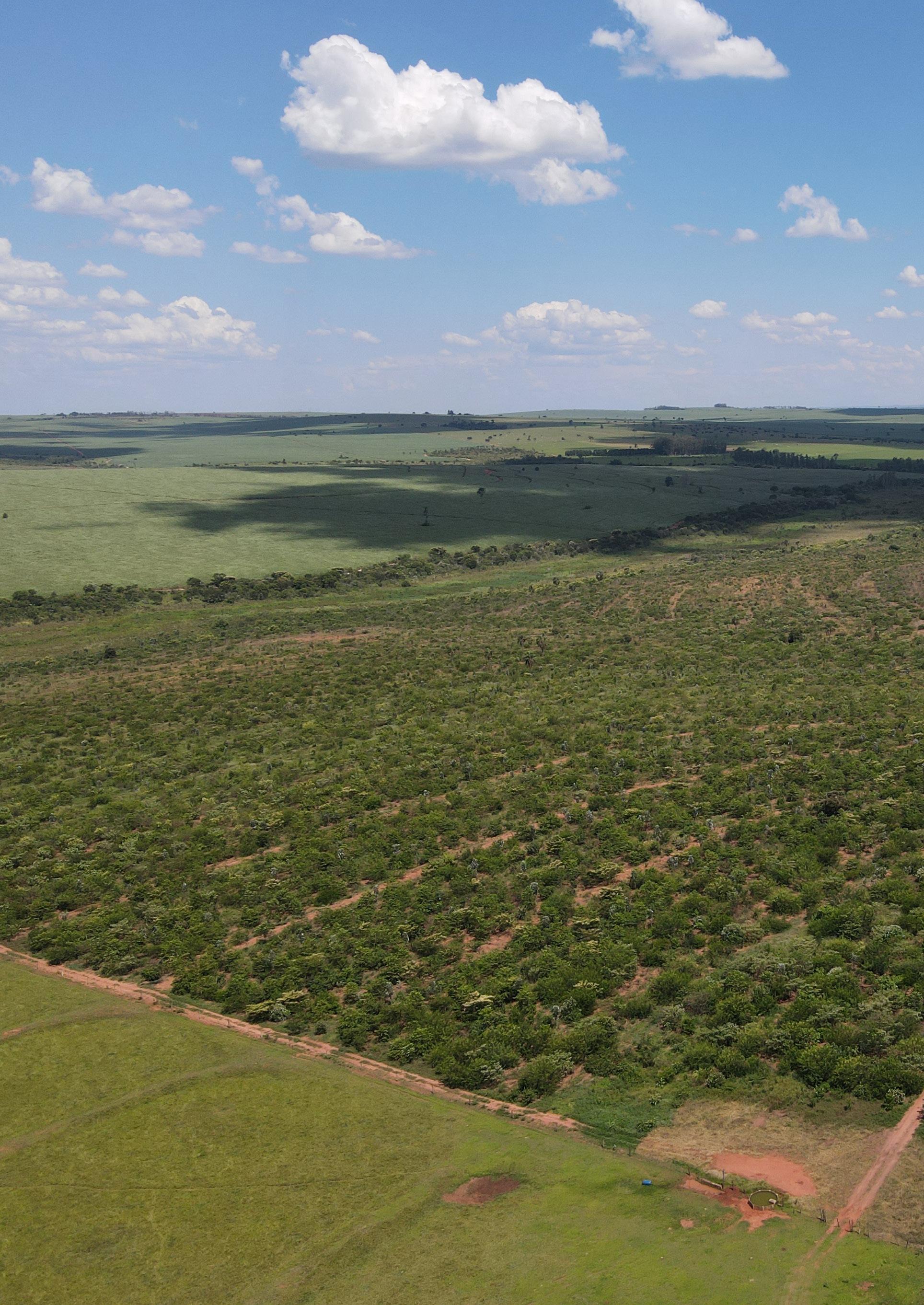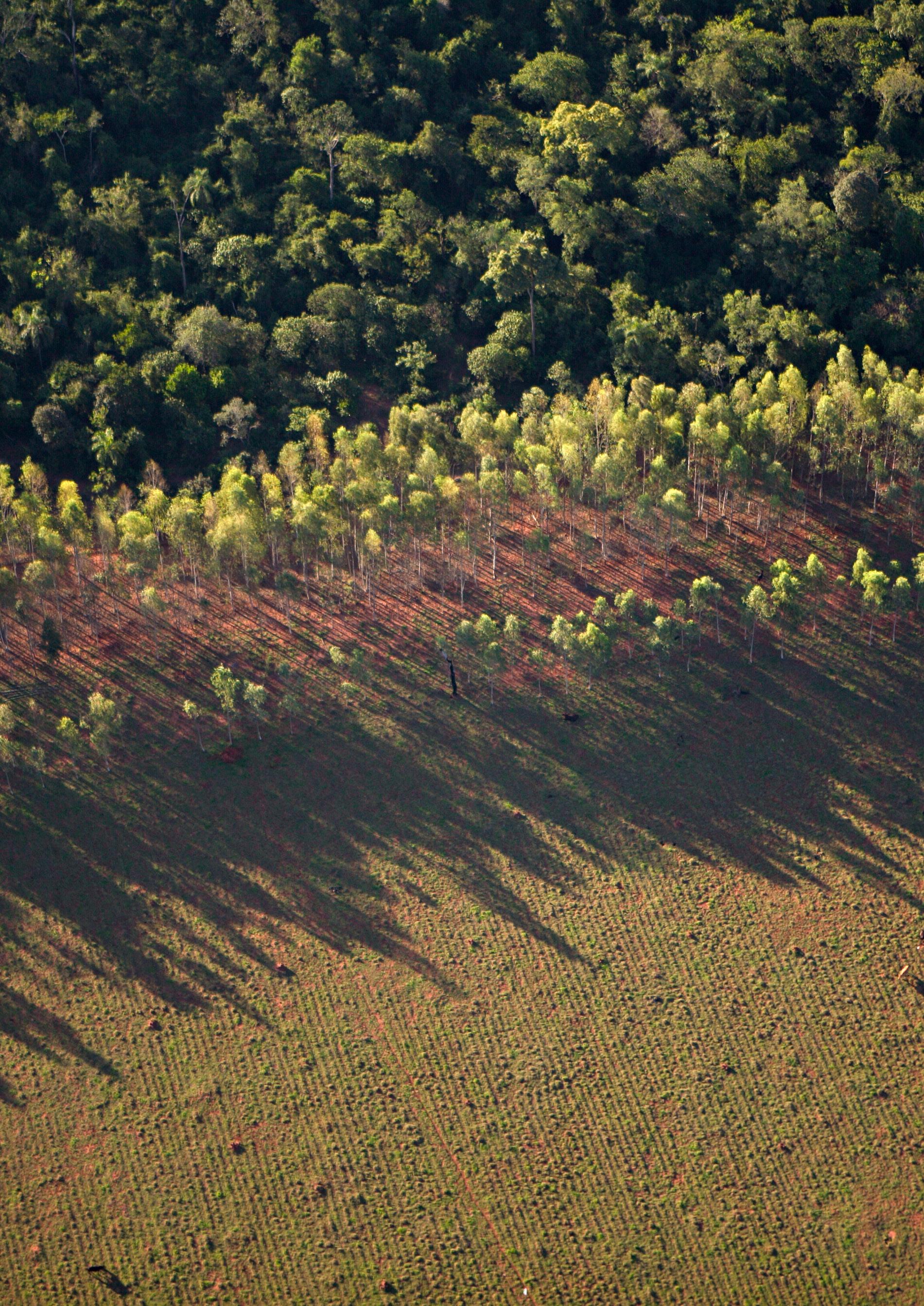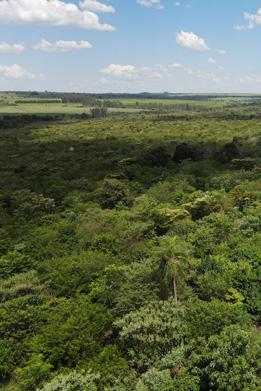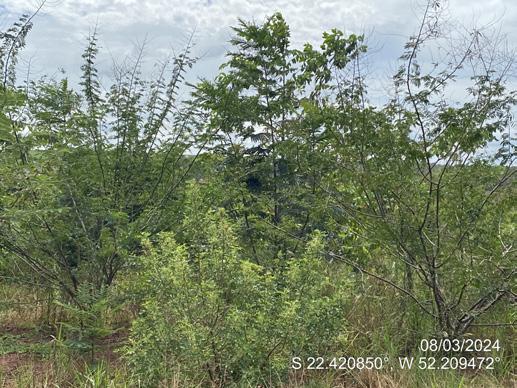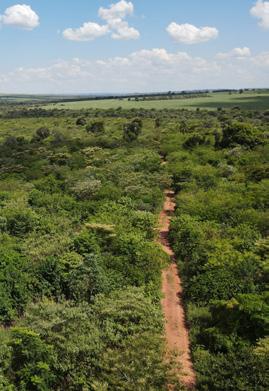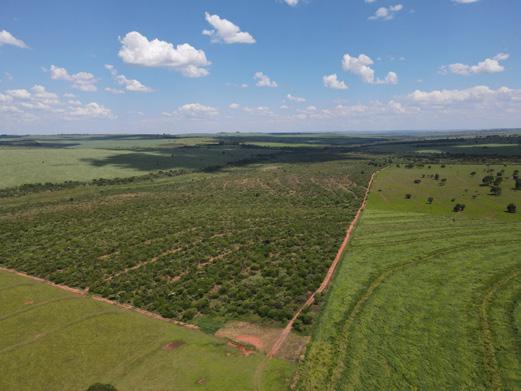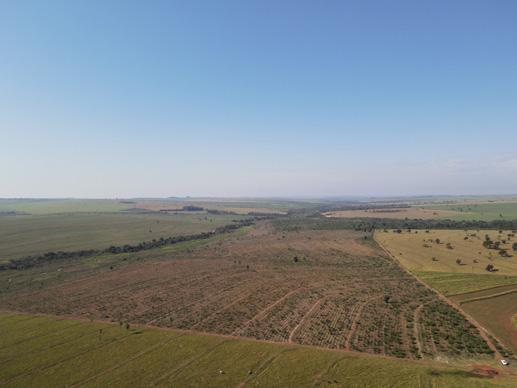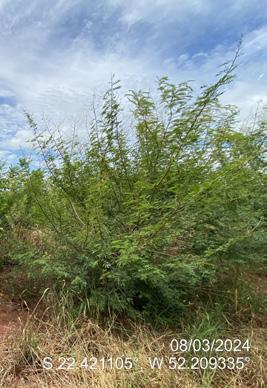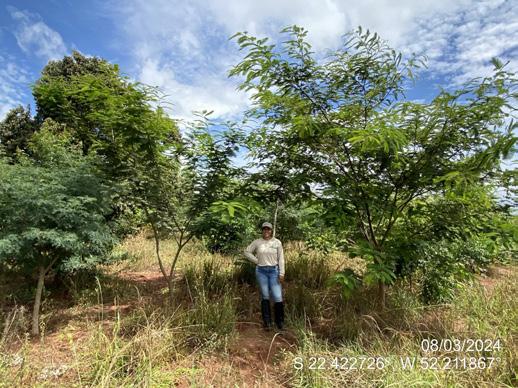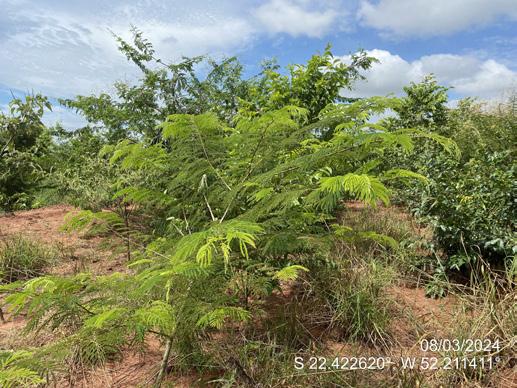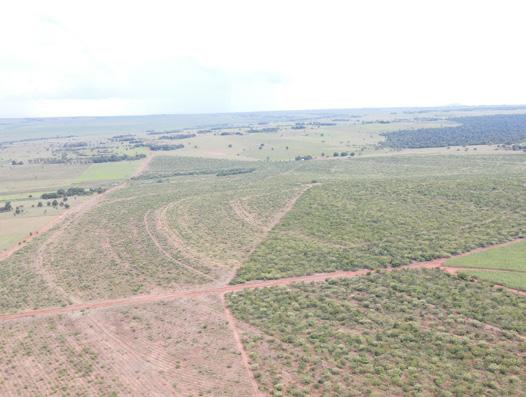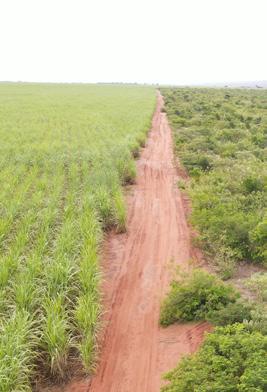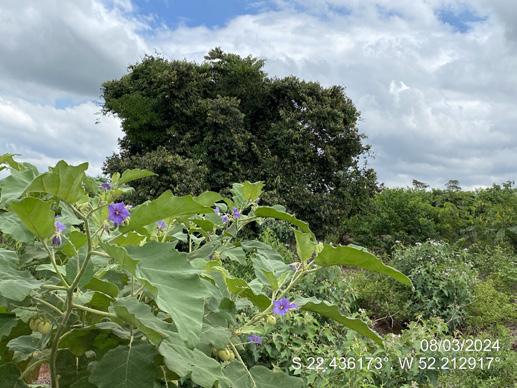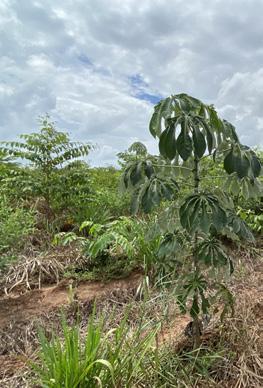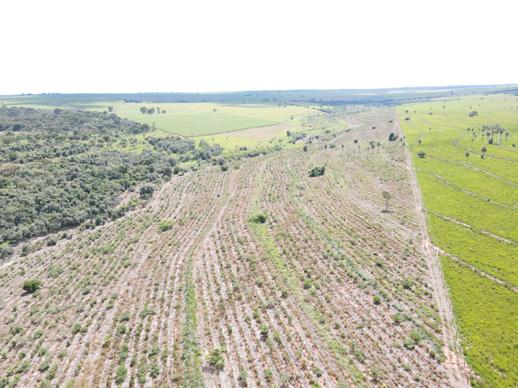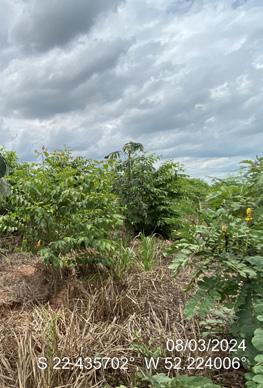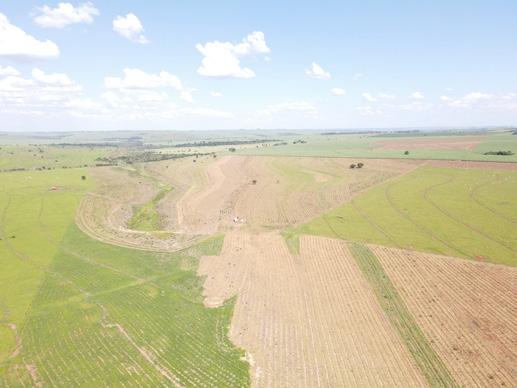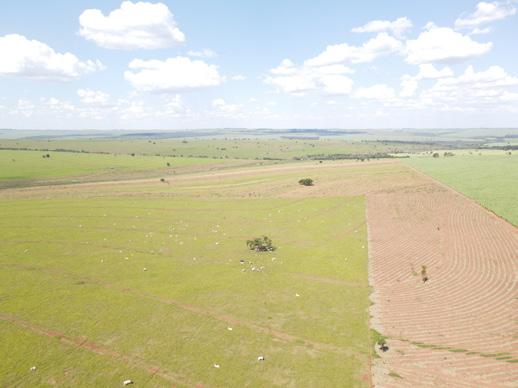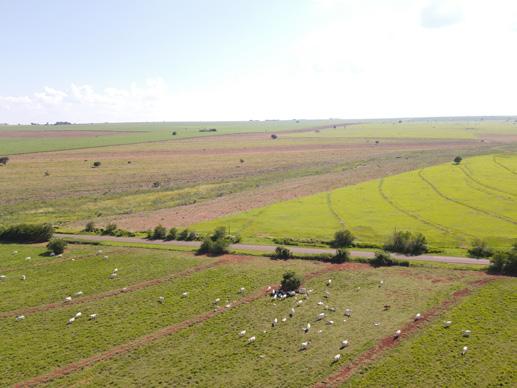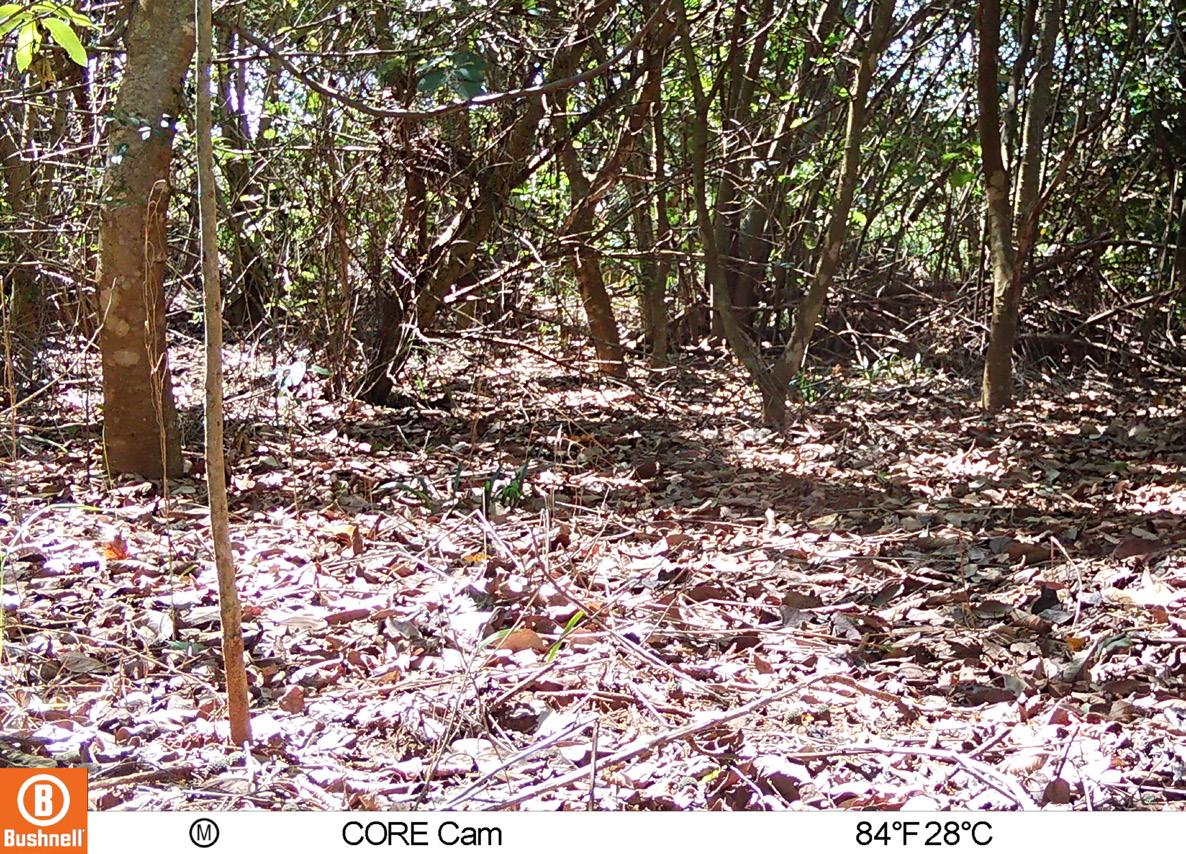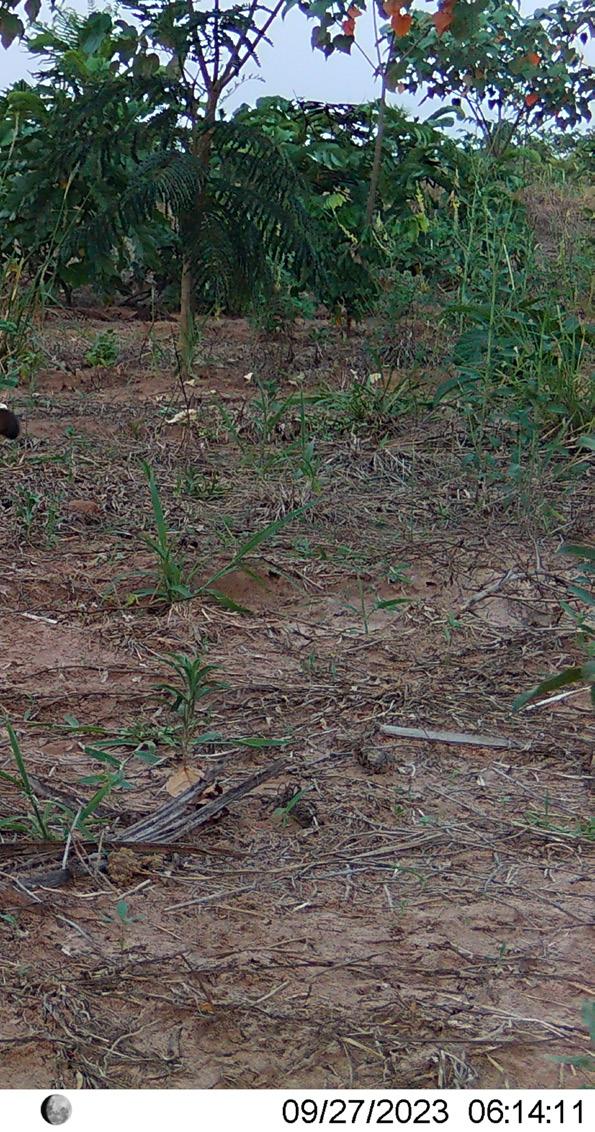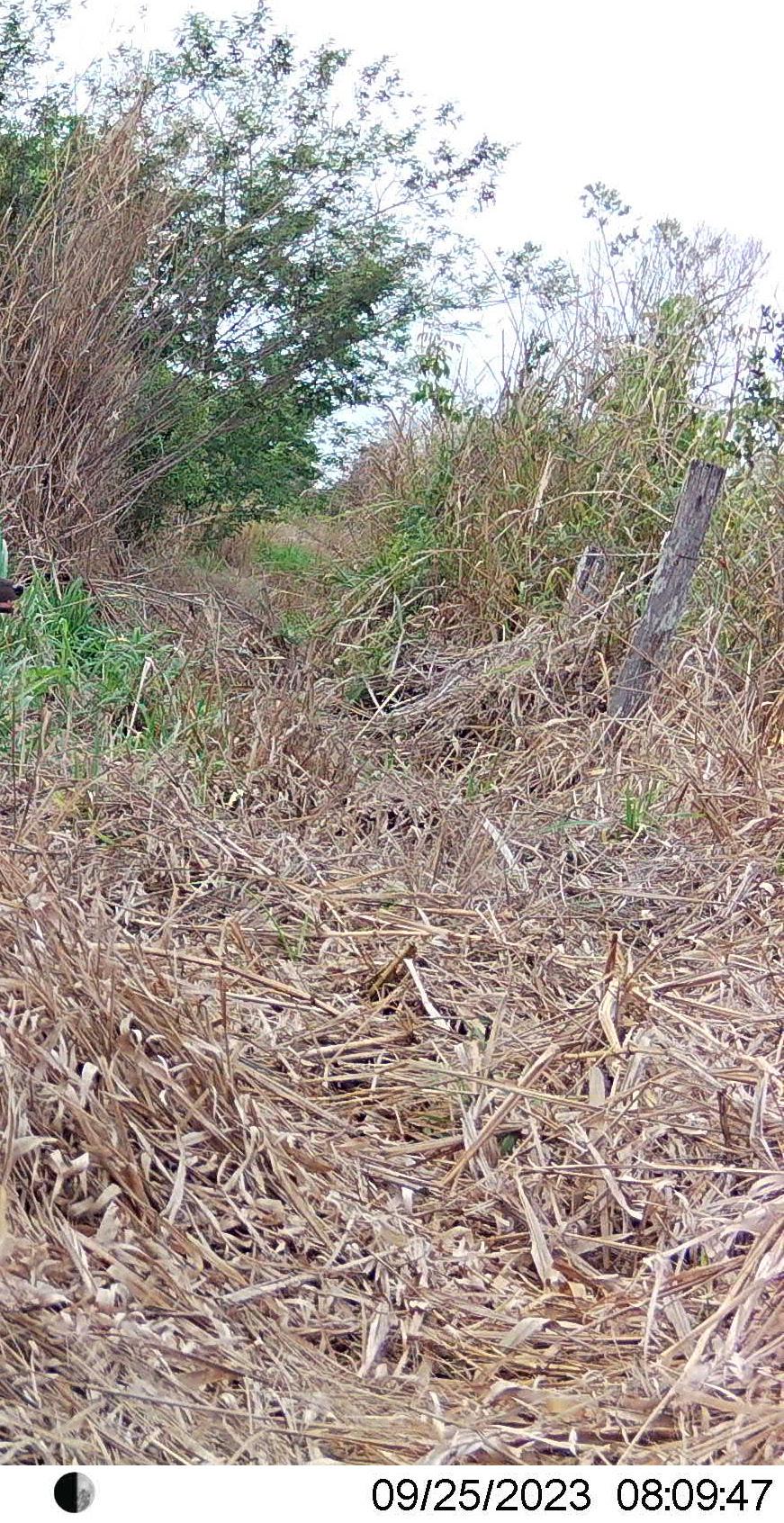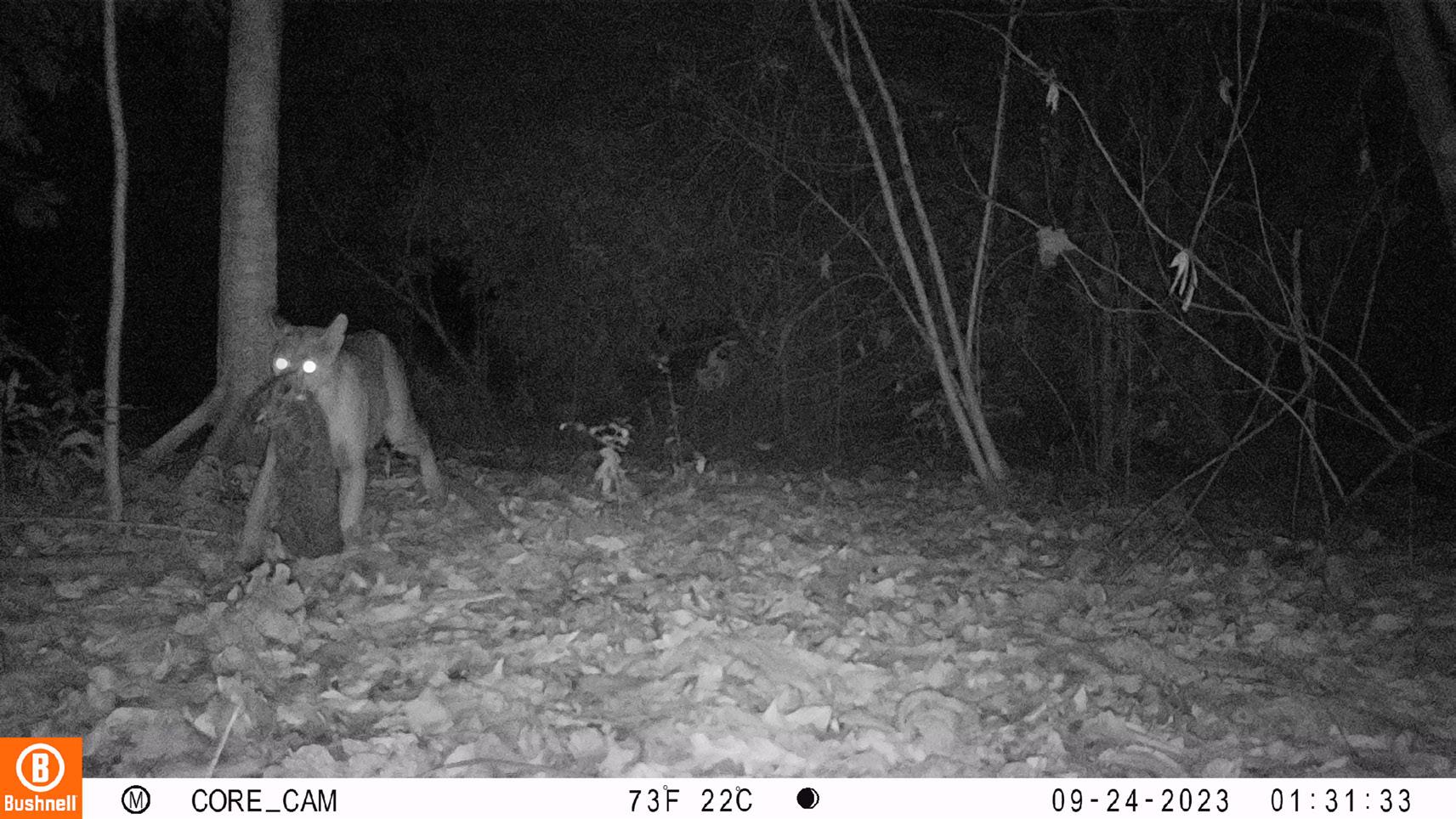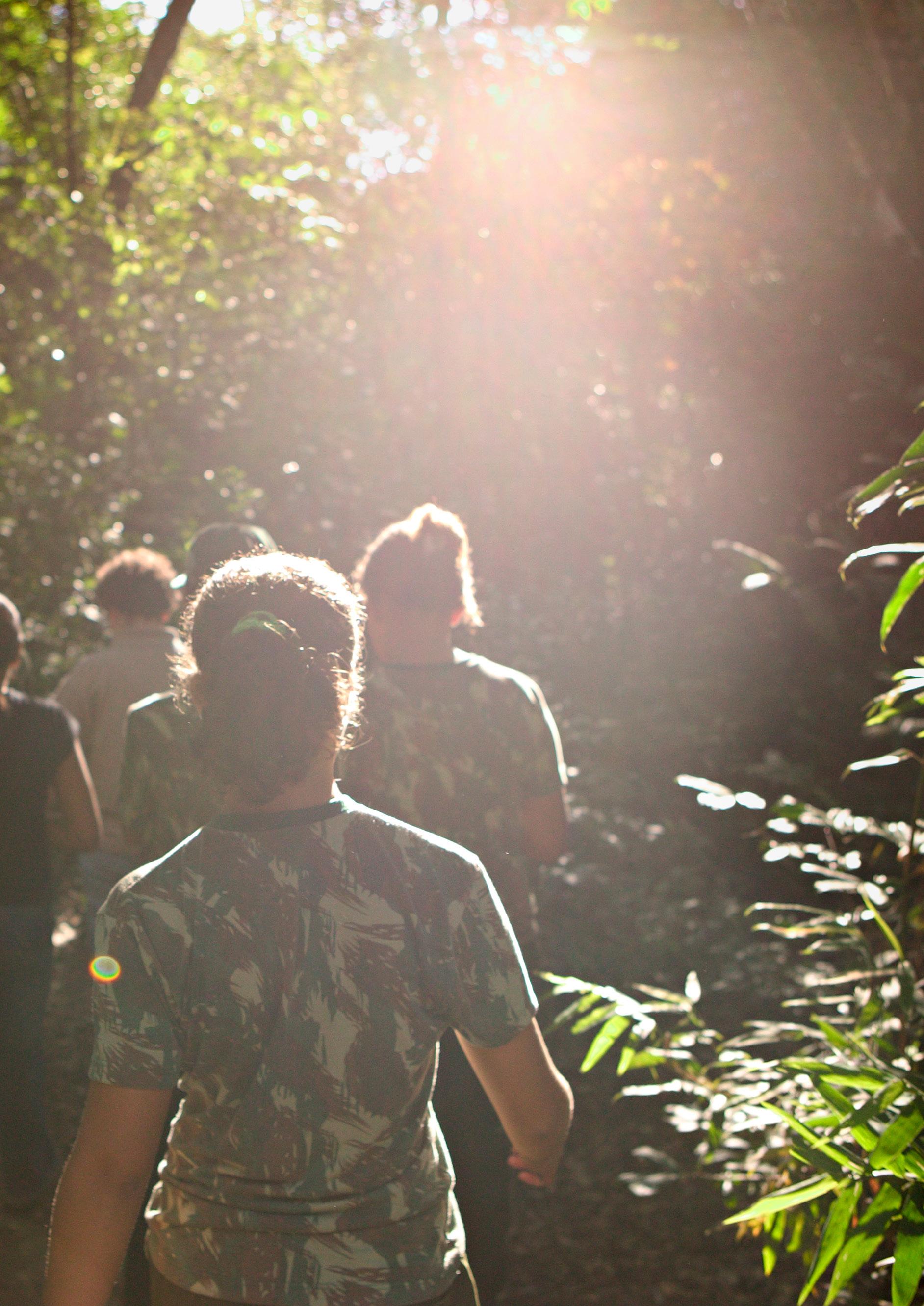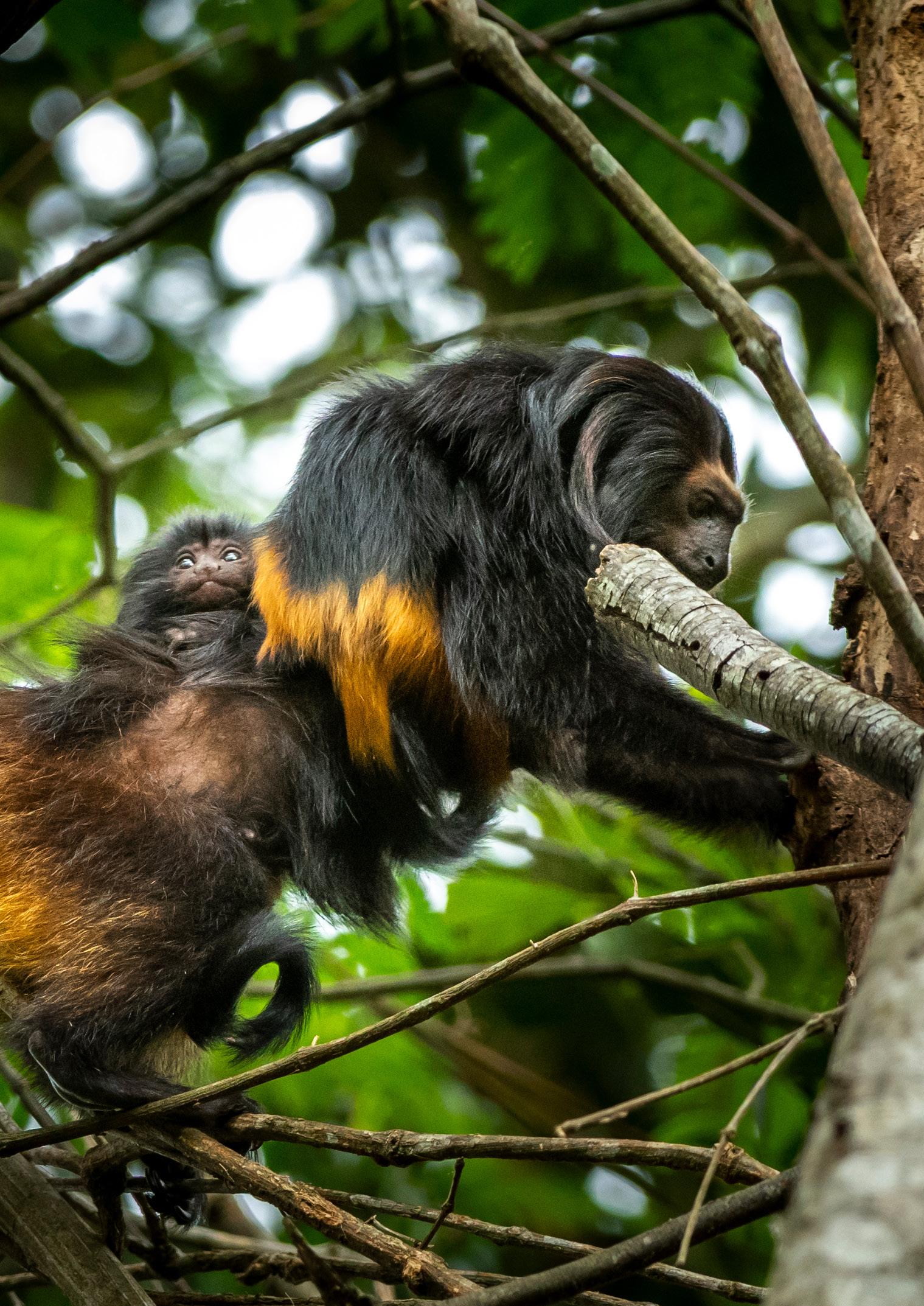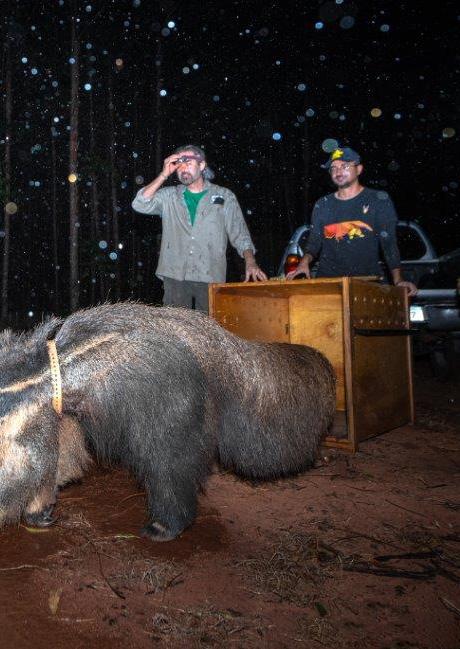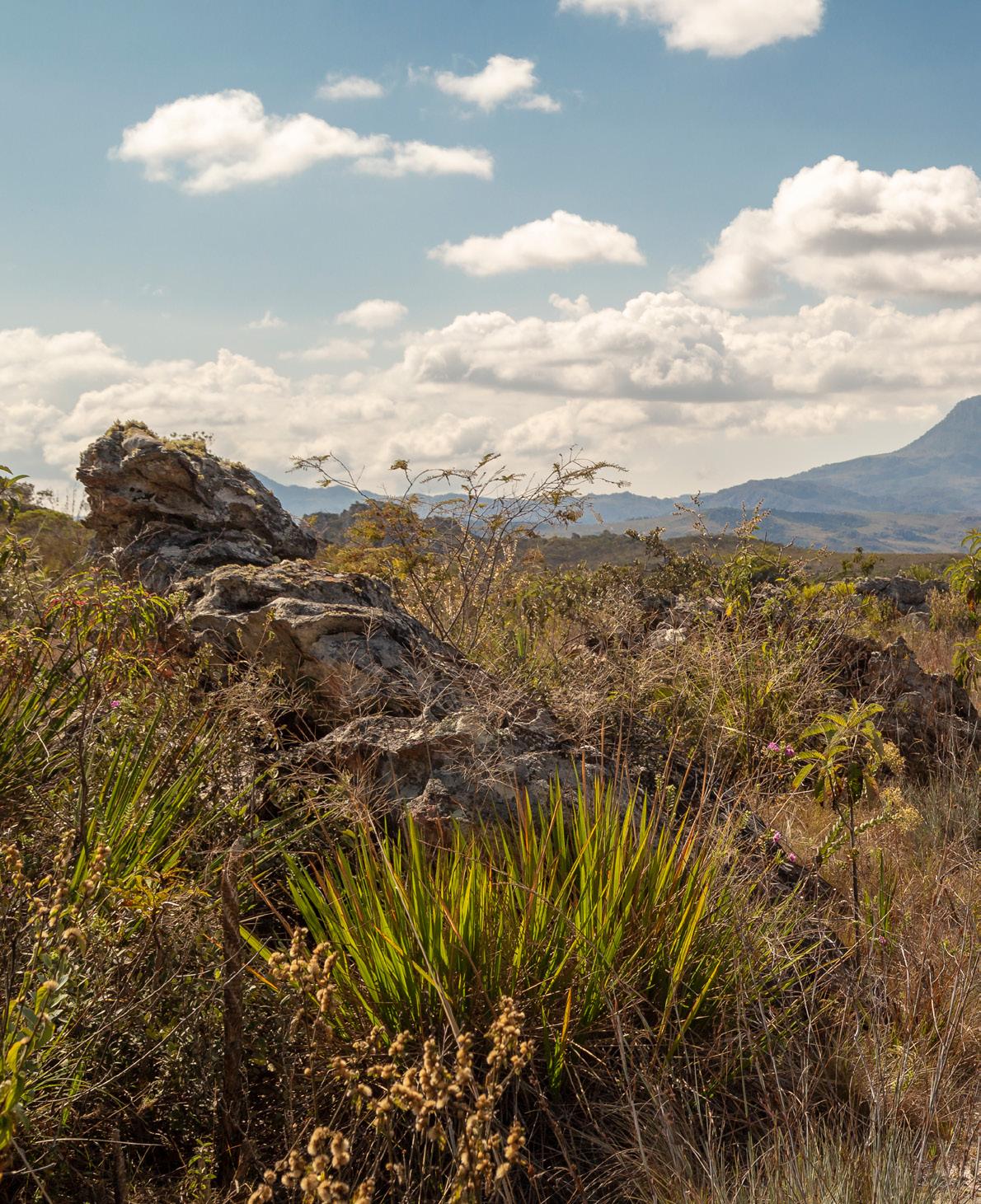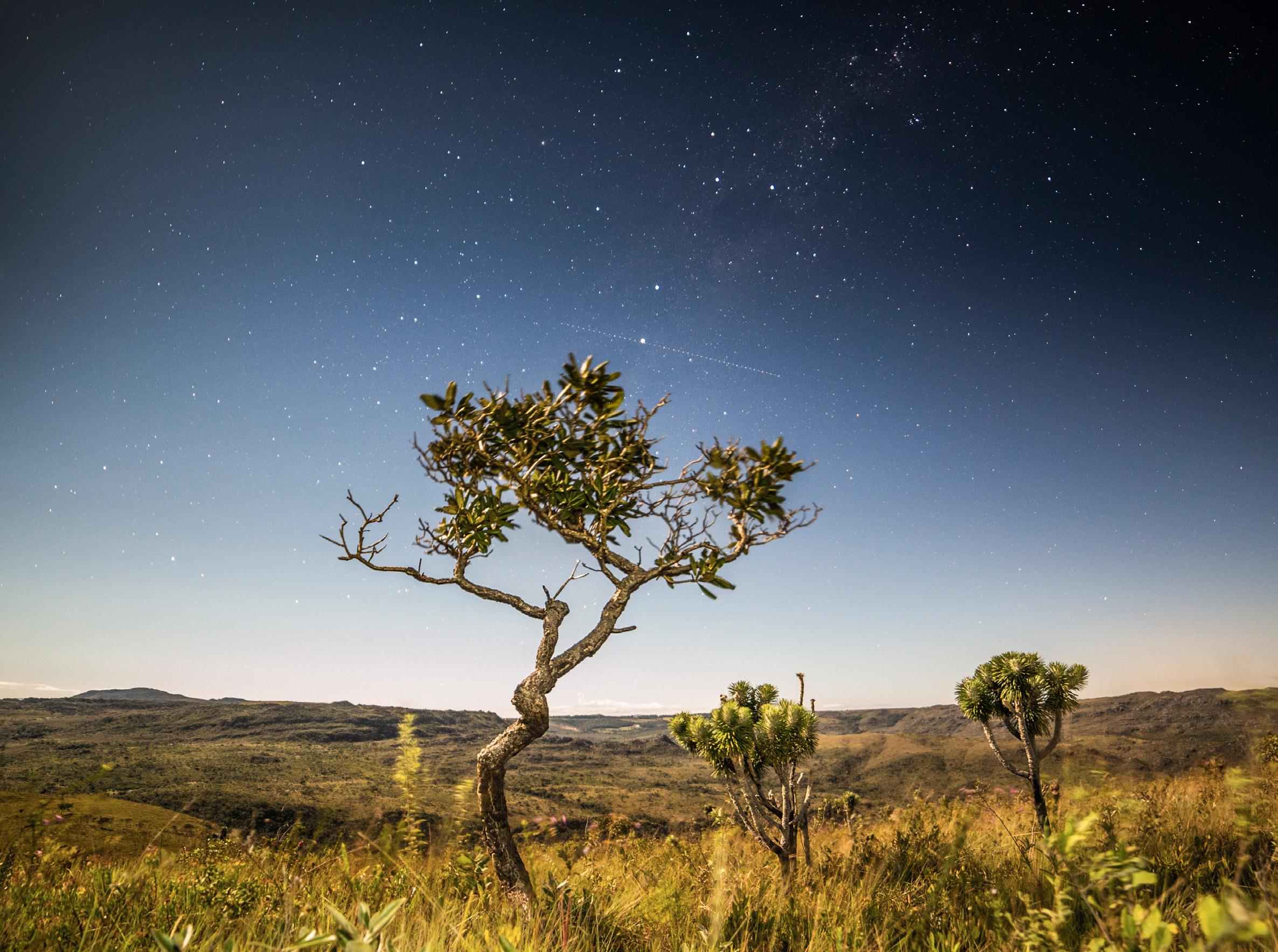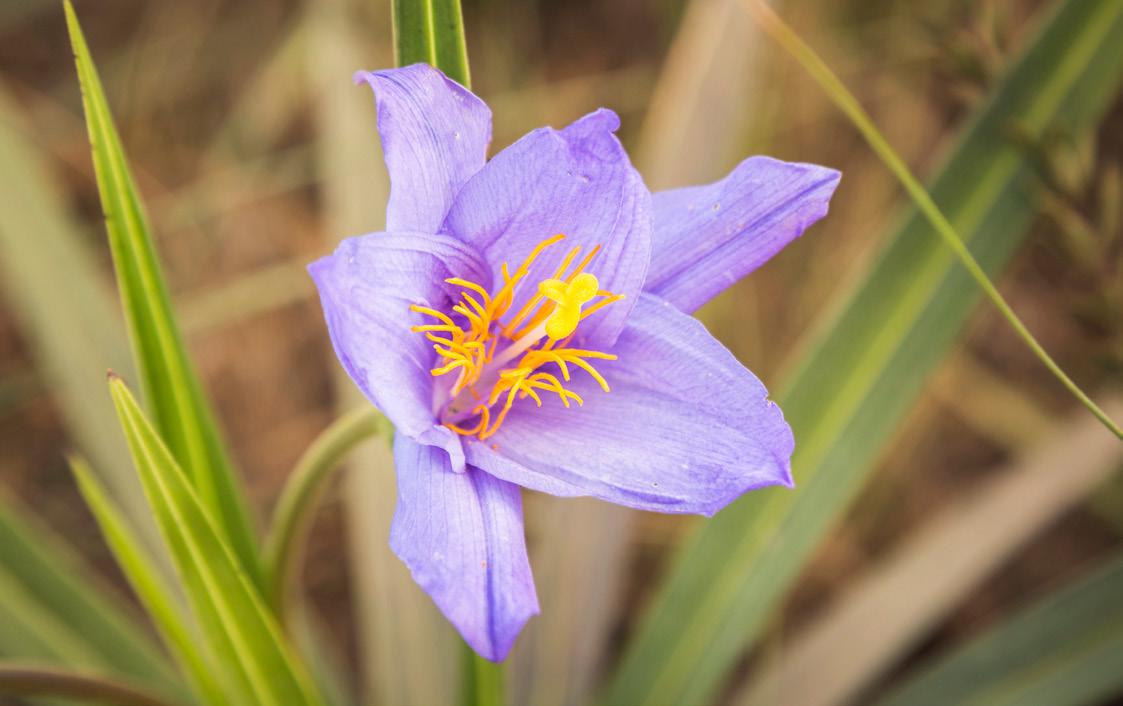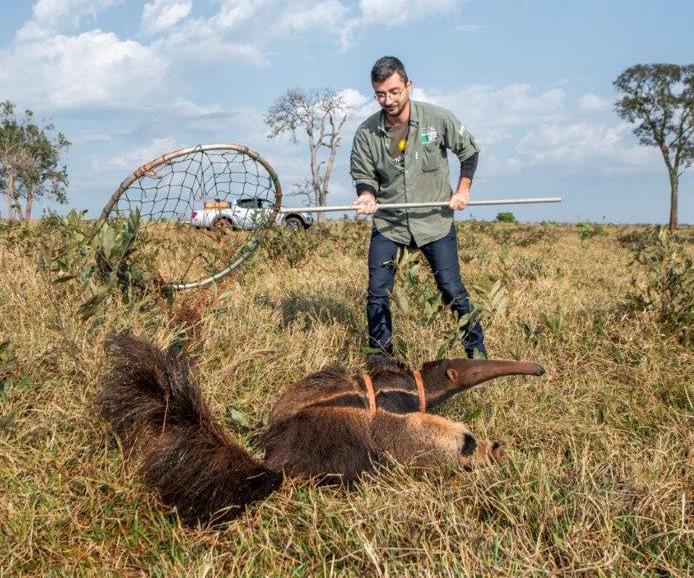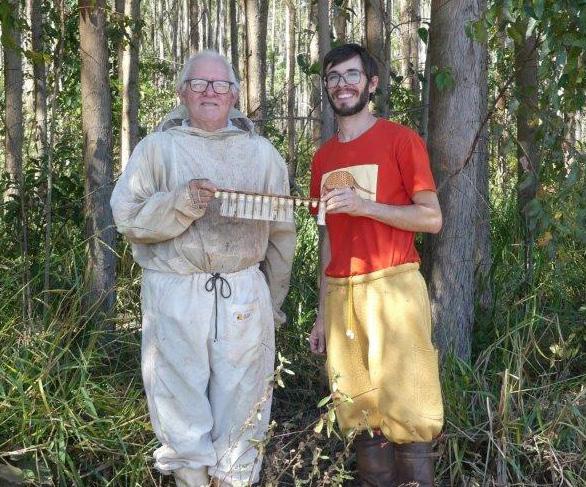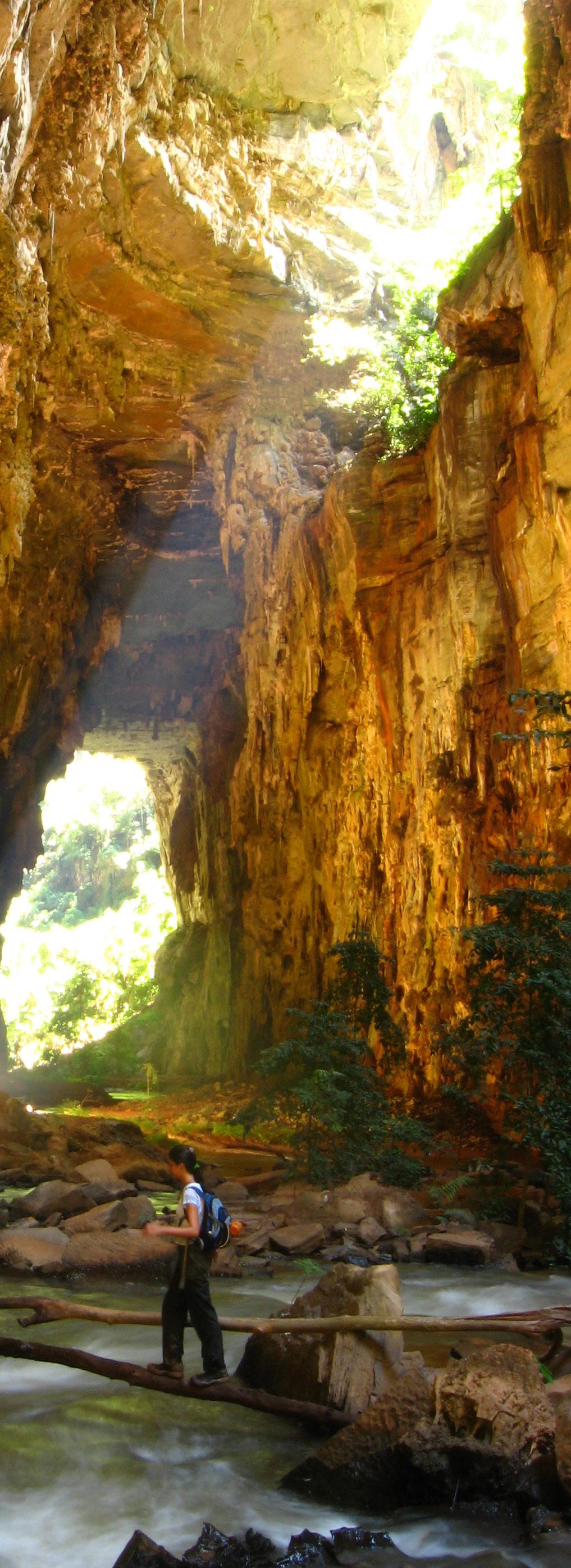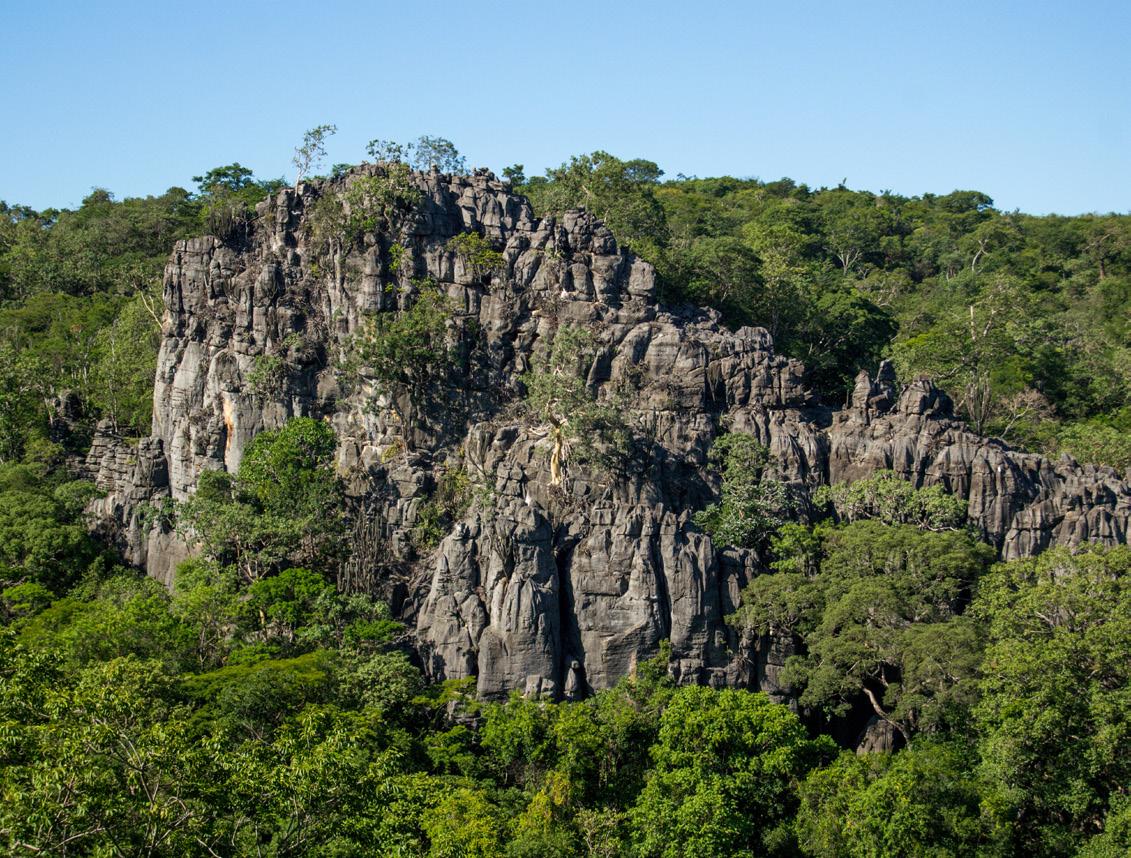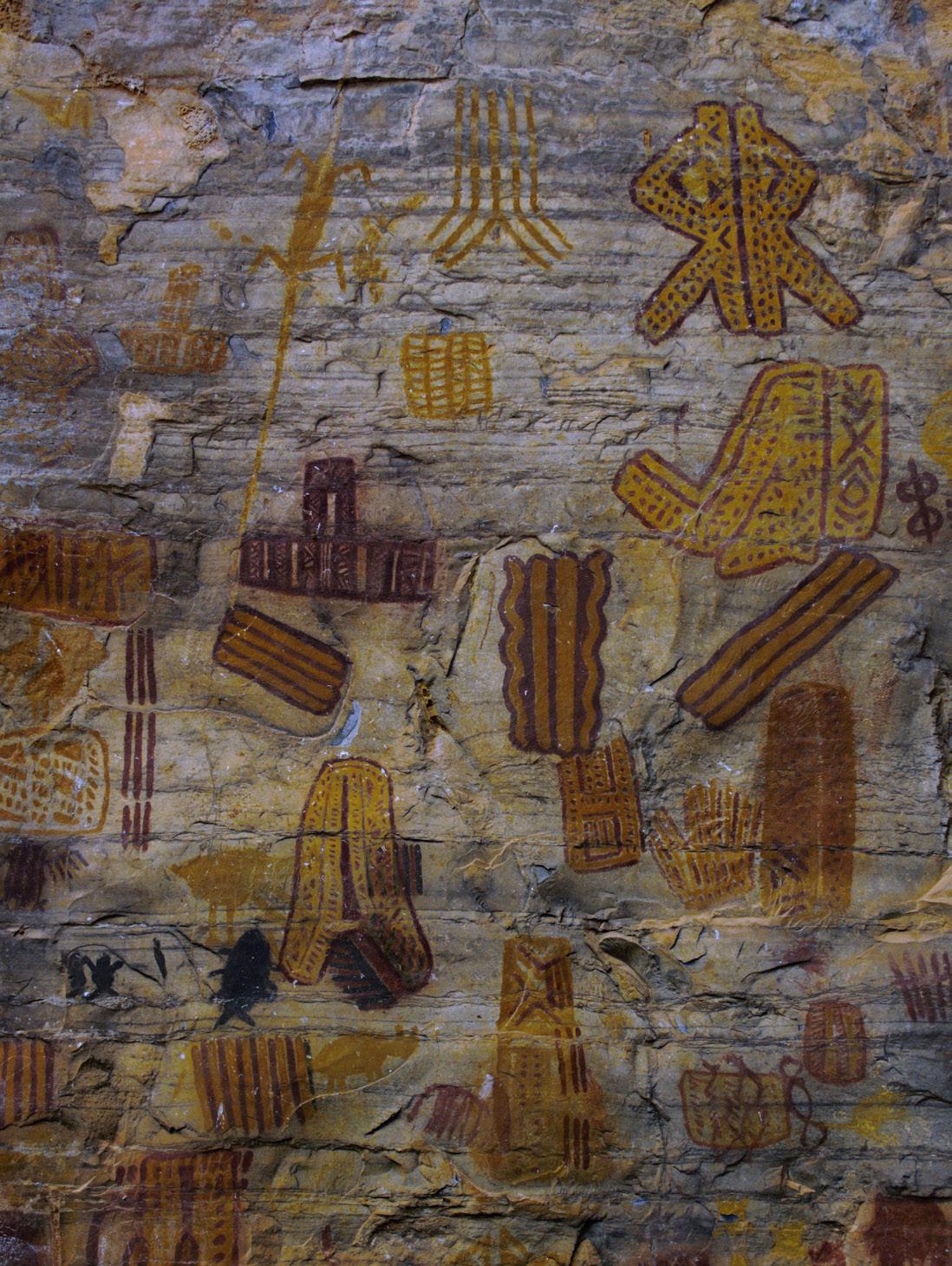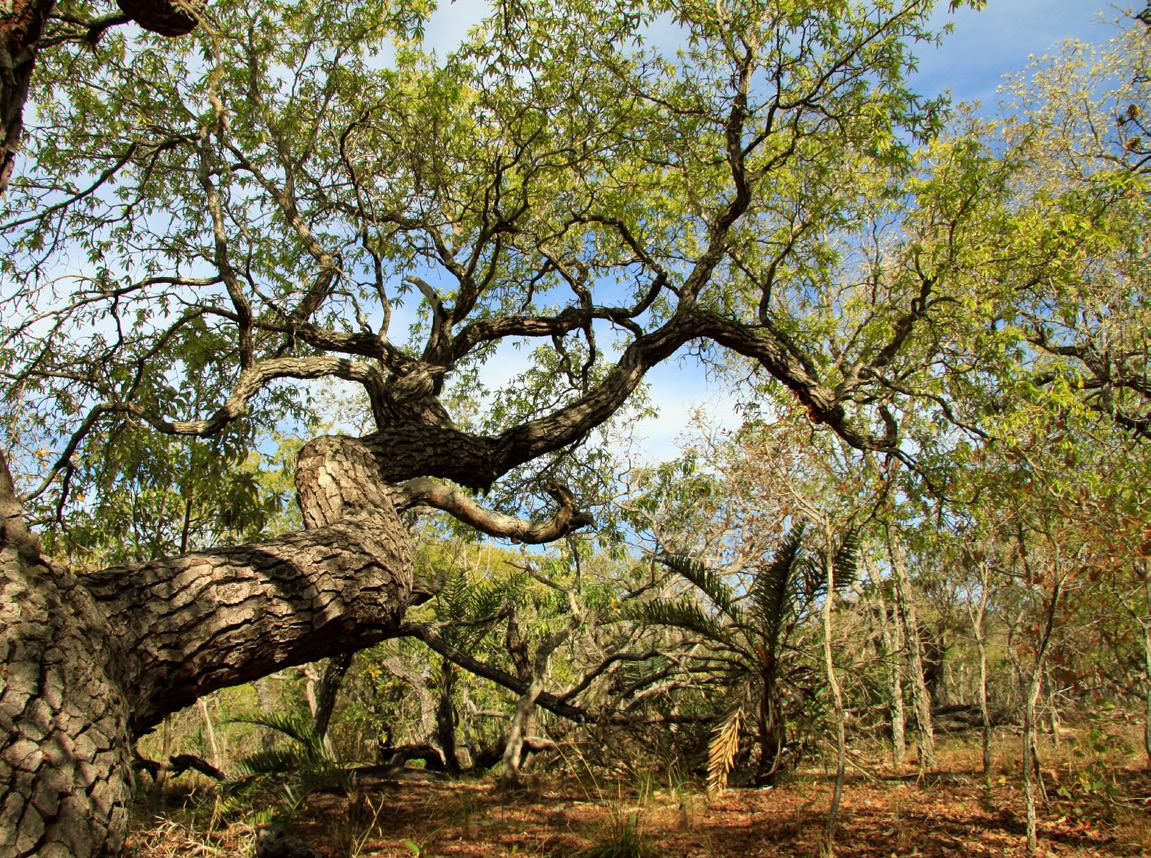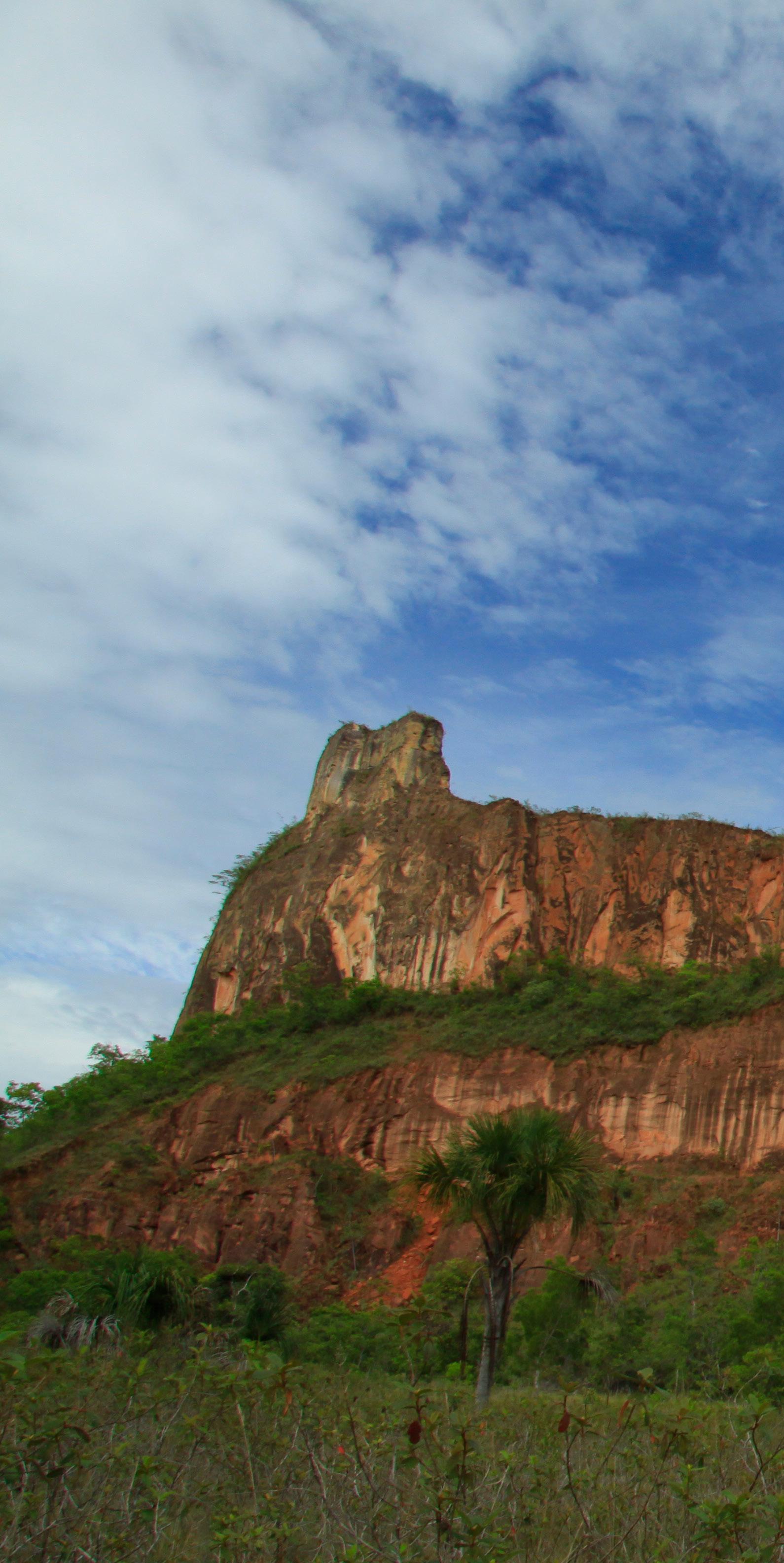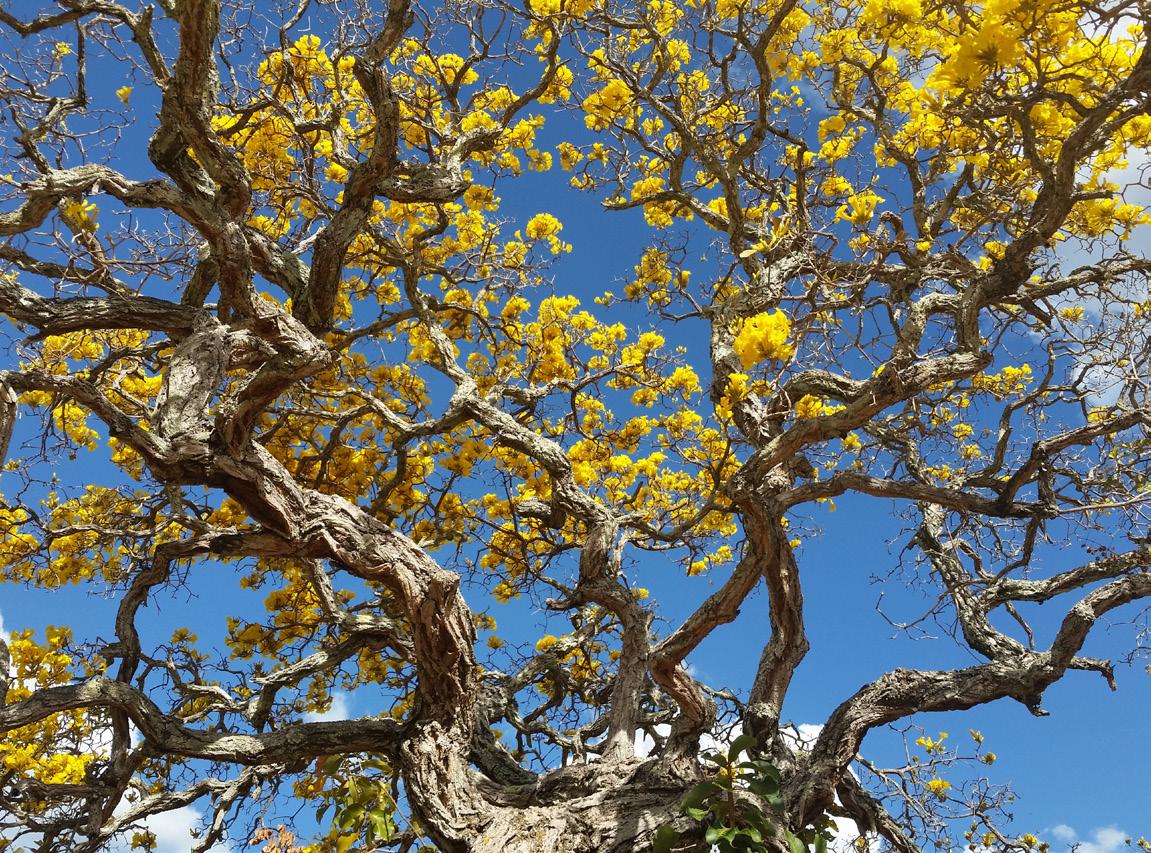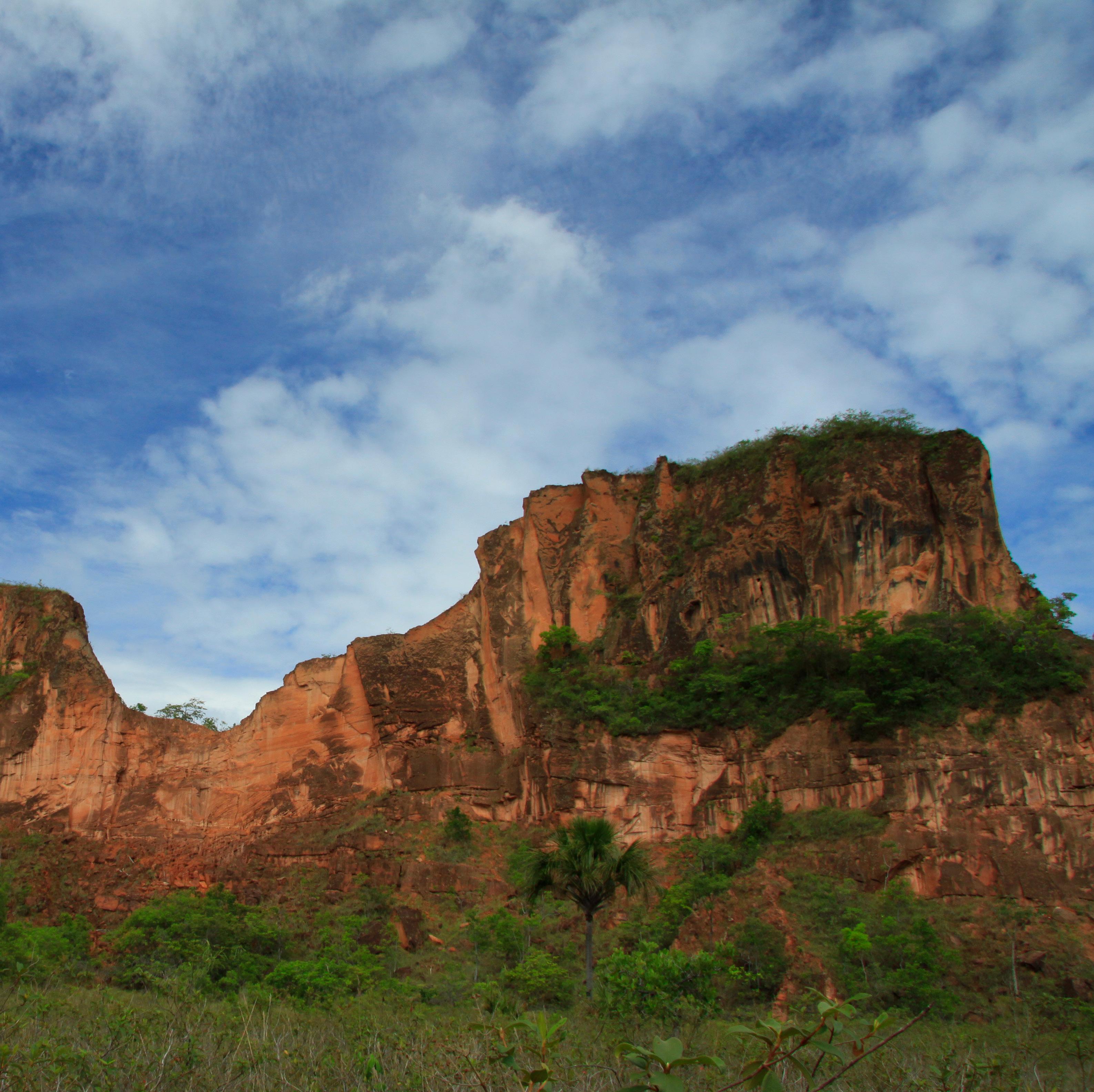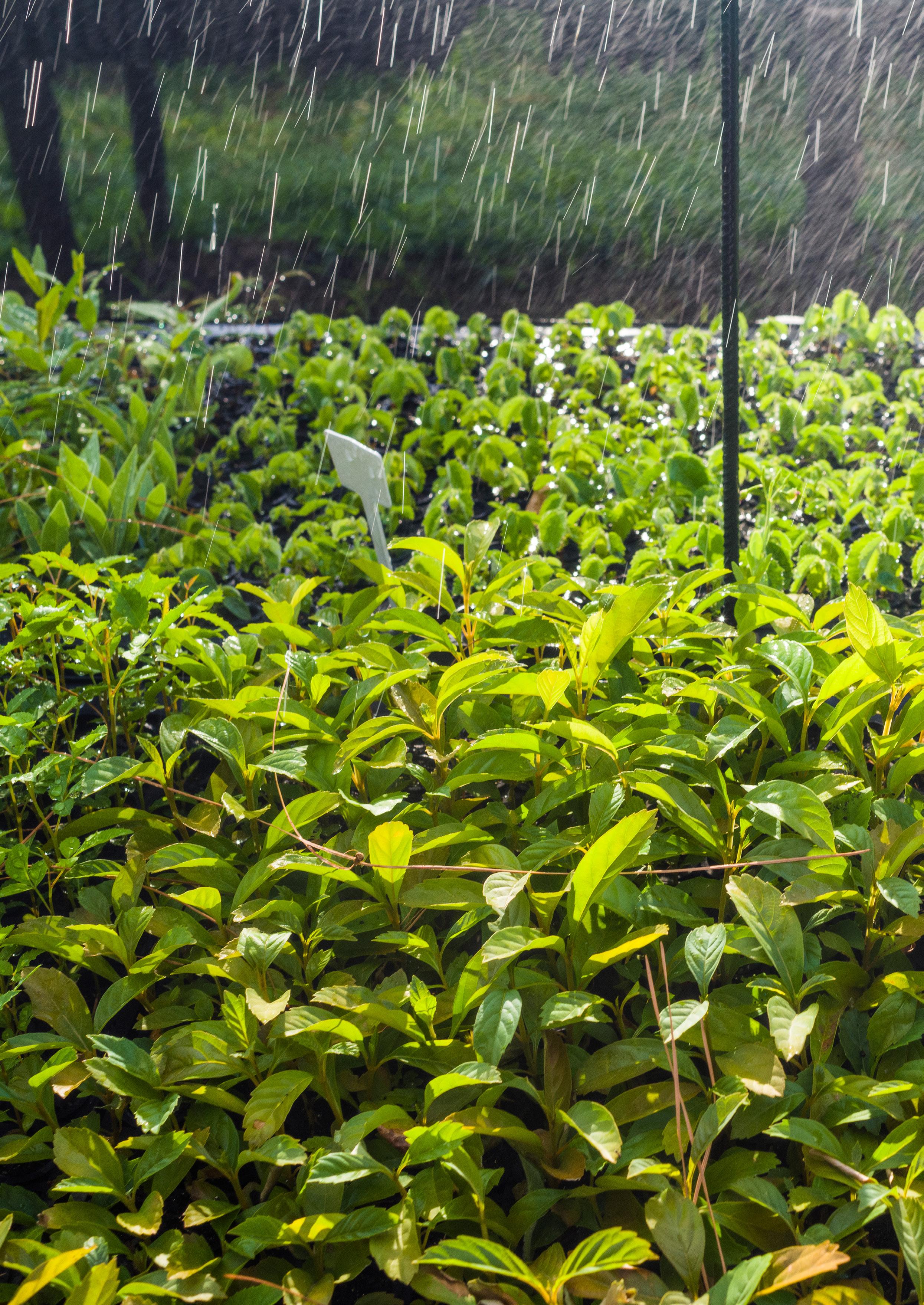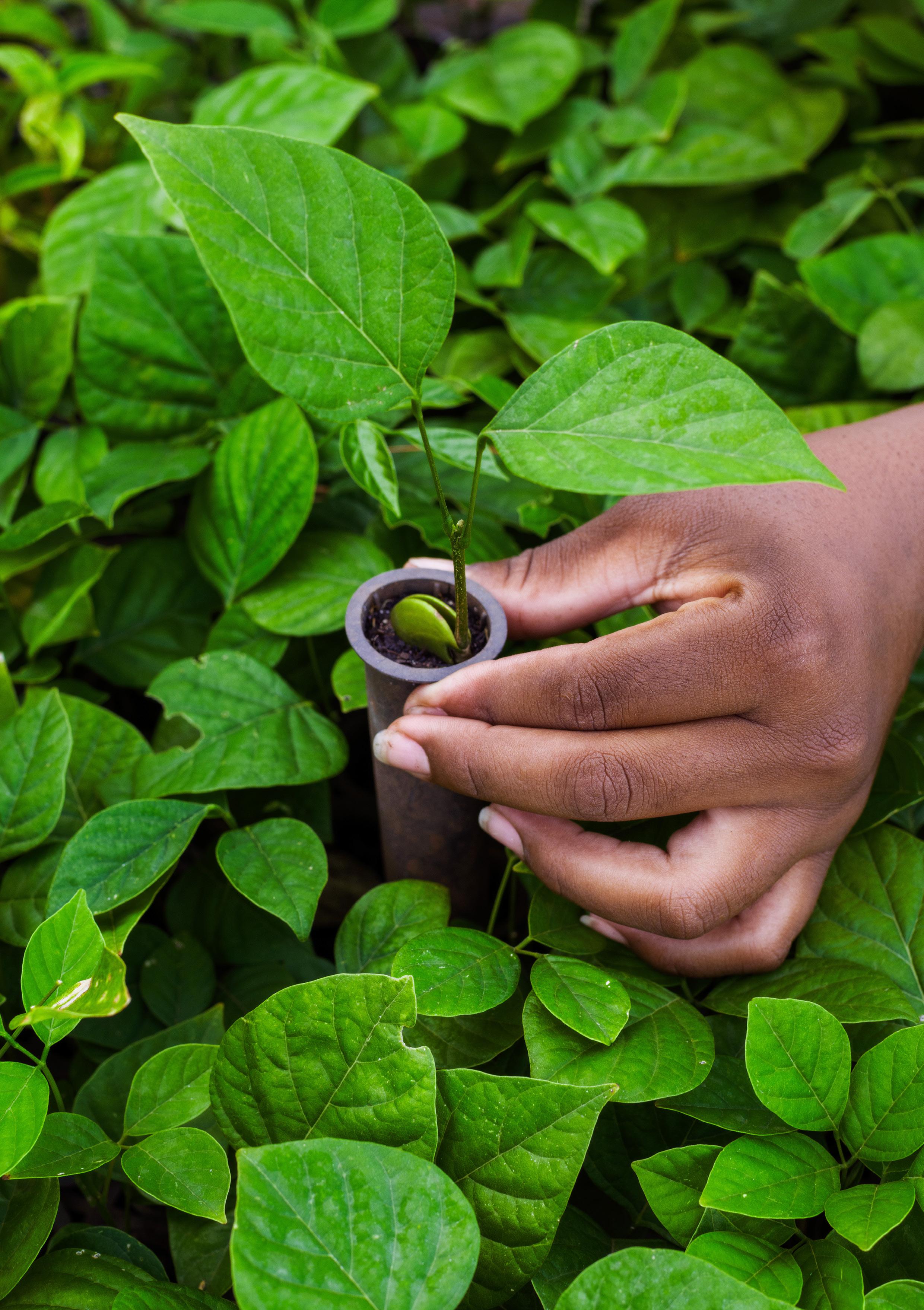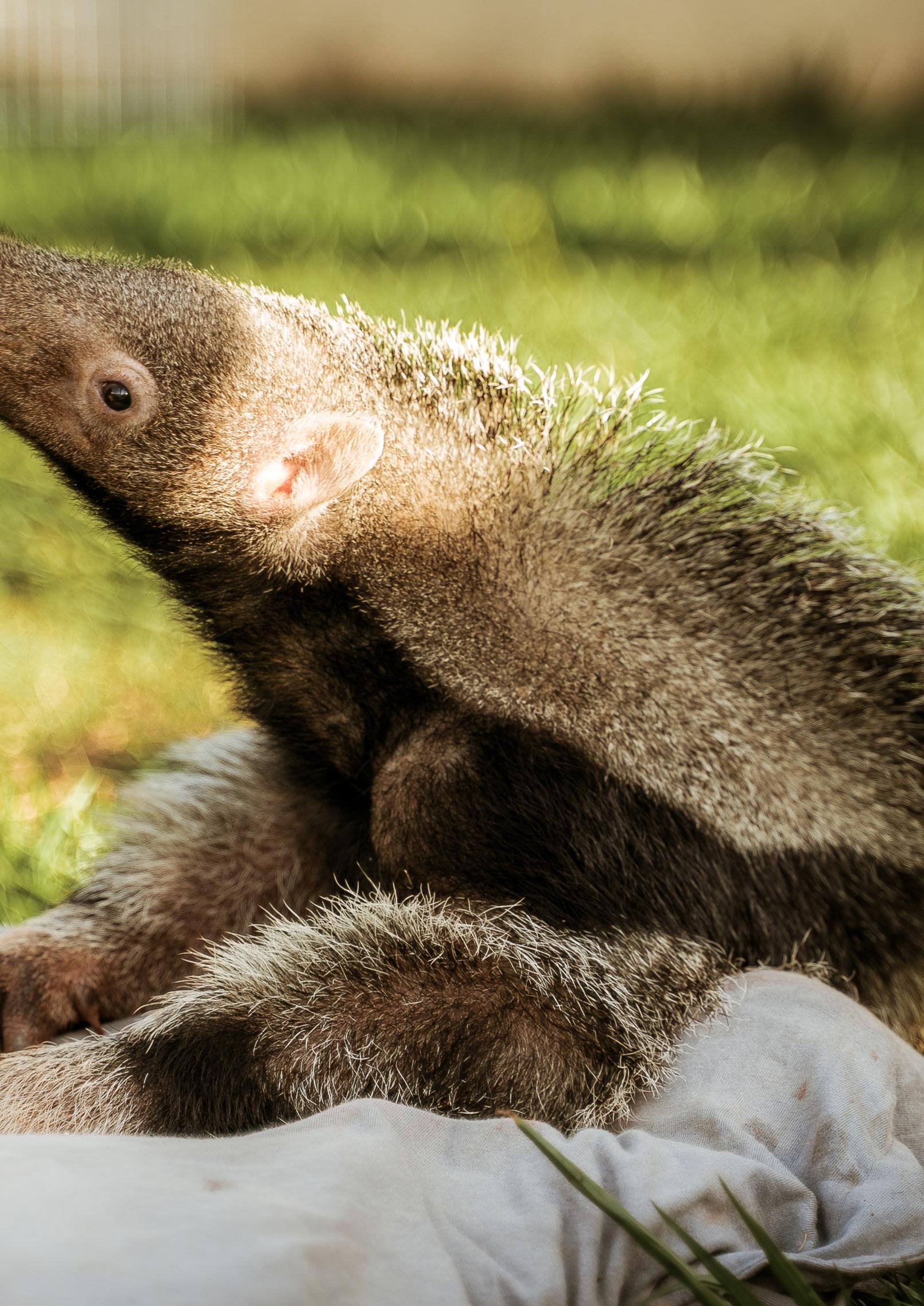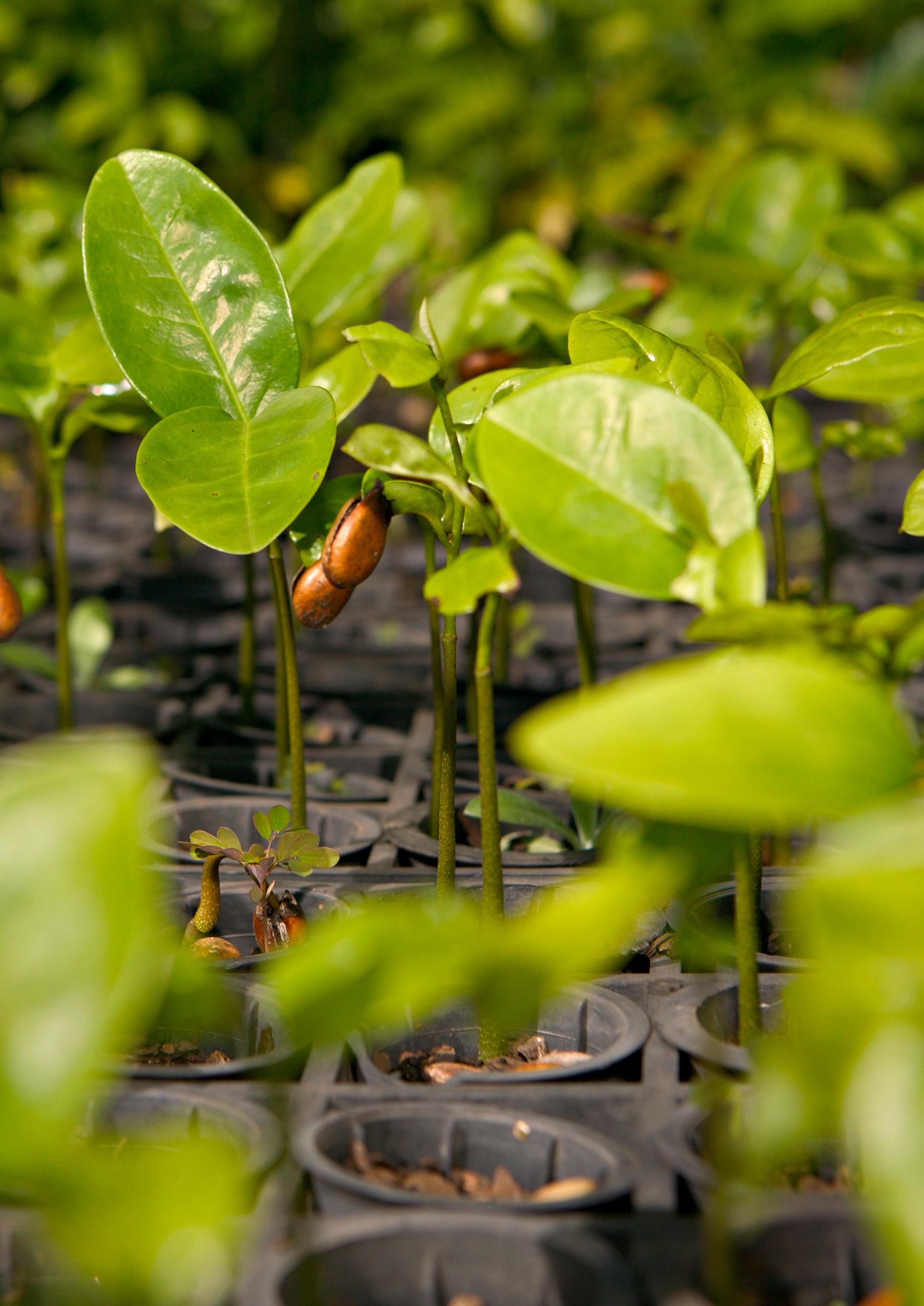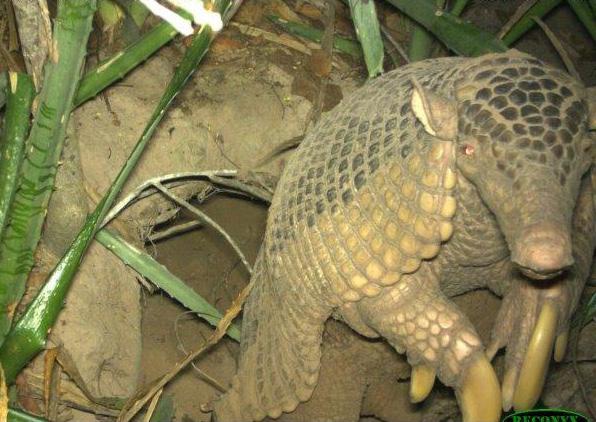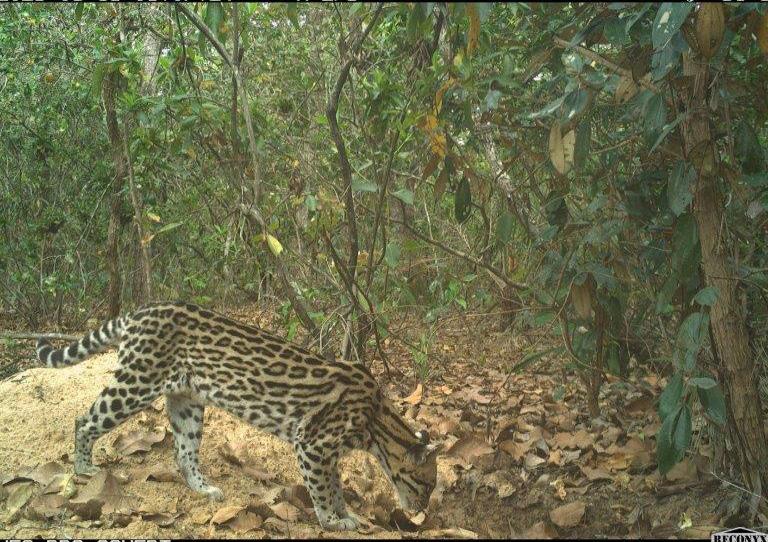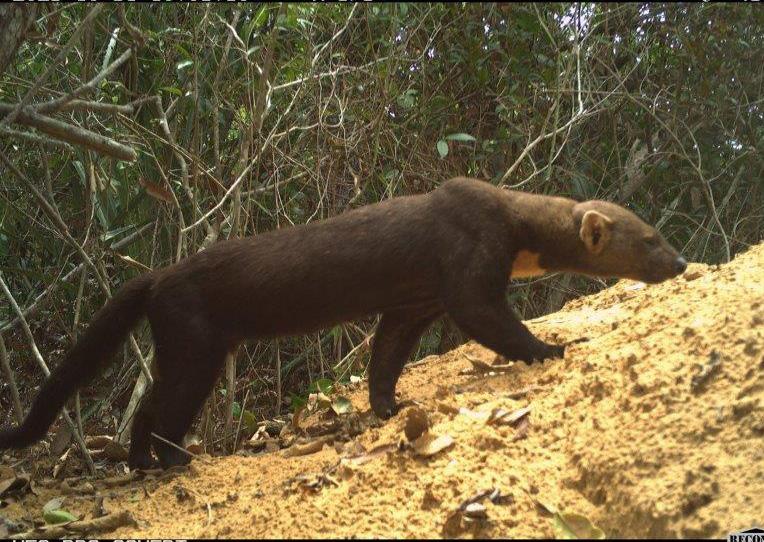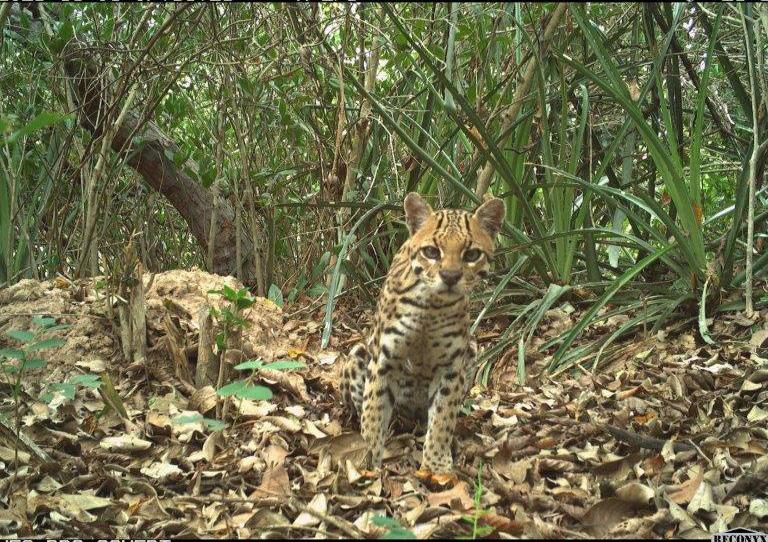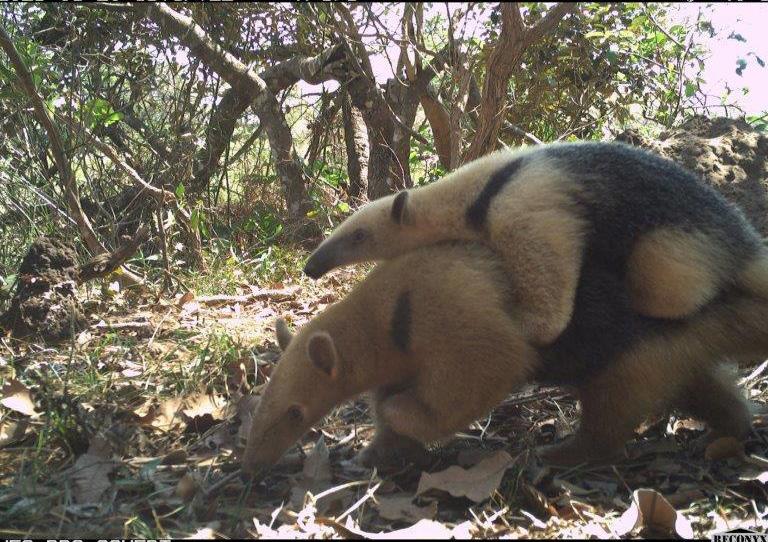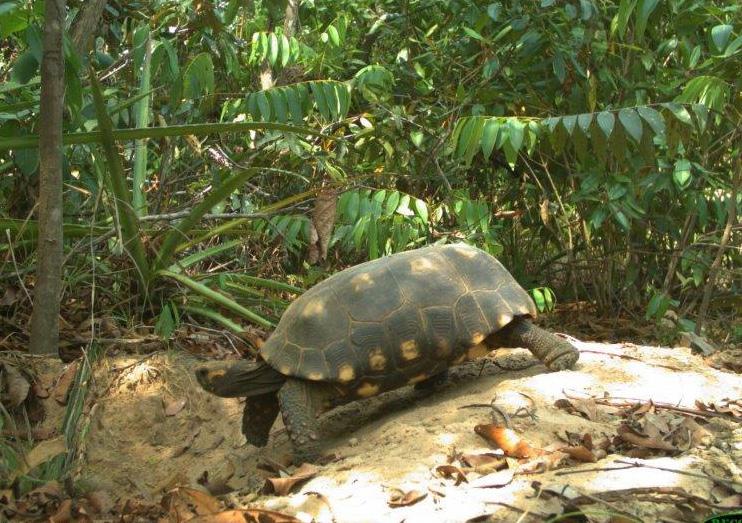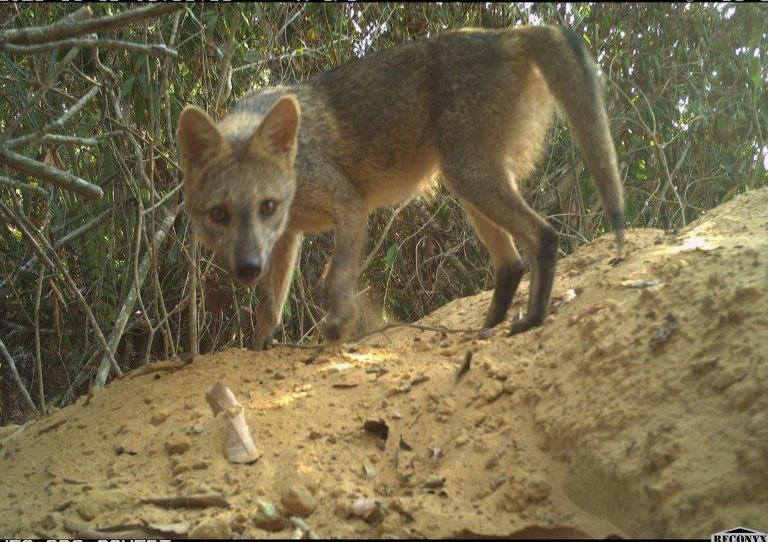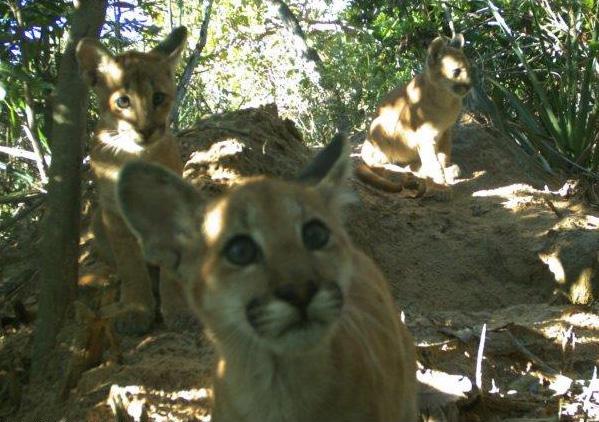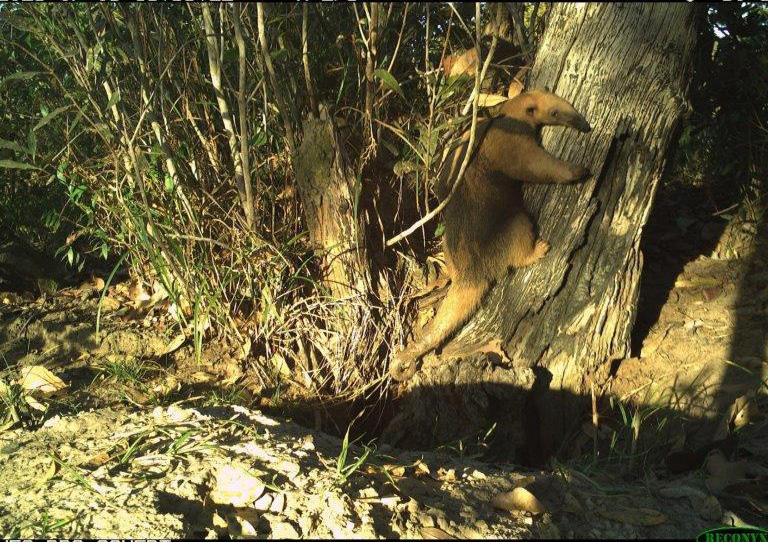APPENDIX
Monitoring framework
SITE SCALE
PROGRAM SCALE
Restoration performance
Carbon Community Benefits
Biodiversity
Landscape Integrity
Program Carbon
Program Community Benefits
Governance
Legal Compliance
Water Protection
Seedling Performance
Survival, abundance and richness of planted and regenerating trees
Method
Plots of 4x25m diagonal to planting rows. All spontaneous regenerating trees height>0.5m and CBH<15cm and all planted trees will be counted. Seedlings richness will be assessed by the number of planted and spontaneously regenerating morphospecies.
Measured as the relative native tree canopy cover over the central line of the 4x25m plot described above.
Measured as the relative invasive grass cover over the central line of the 4x25m plot described above.
0 – No cattle
1 – Signs of cattle entrance
0 – No signs of fire or reports of fire are from before the project start.
1 – Signs of fire in the area after restoration activities started.
0 – Soil mostly covered by litter, with no signs of erosion.
1 – Exposed soil, but no signs of erosion.
2 – Signs of erosion
Survival (%)
Seedlings/ha
Species sampled
Cattle entrance score
Measured by a combination of remote sensing techniques and field plots tons of CO2e
Calculated based on a ratio of the aboveground carbon stocks provided by the literature. tons of CO2e
Payment of seedlings purchases from the financial records of the institution US Dollars
Payment of restoration services from the financial records of the institution US Dollars
Audio Recorders installed in key restoration sites
Camera traps installed in key restoration sites
Faunation index based on functional attributes of the species found
All seedlings surviving (100%)
Varies with age
Varies with age
cattle entrance (Score = 0)
Critical = 0.2*
Minimum = 0.6
Adequate = 1.0
381 tCO2e at 30 yo (based on literature review) Measured CO2eq/Goal CO2eq
Cost for buying seedlings for the site (2,000 seedlings/há)
Cost of services to implementation and maintenance of a site
Registered investment/ Goal investment
Faunation index considering the species pool of the landscape
Measured faunation index/Goal faunation index
FLR landscape scale indices
Landscape Integrity
Sub-theme
Habitat recovery
Hectares restored
Habitat conservation Area of remnant habitat
Landscape connectivity Integral Connecvitiy Index (IIC)
Program Carbon Carbon
Tons of CO2e sequestered Current FLR carbon program.
Work
Program Community Benefits
Community Investment Index
Governance Capacity
Landscape Governance
Governance Process
Governance Results
Additional Workdays
Funds invested for nurseries, planting teams and other stakeholders directly engaged in the project.
Coordination
Resources
Authonomy
Shared Vision
Access, use, and generation of information
Adaptive Management
Equity
Liability
Beloning and perception
Based currently in generated program.
Current by total the
Meetings different state restoration research and obtain each
Number of landholdings complying with legal norms Forest require compliance the >20% compliance program
bodies
Method
Size, in hectares, of the areas under restoration or natural regeneration the landscape, in ratio to the total area that the program aims to restor
Remnant Habitat – Score
<70% – 0
70-80% – 0.2
80-95% – 0.6
95-100% – 1.0
define the initial remnant habitat, forests under 10 years old are not considered
Landscape connectivity is calculated based using the Integral Connectivity Index for the current project activities and if all goal areas the FLR program are restored.
Current carbon sequestered by the FLR program in relation to the goal carbon sequestered by the FLR program.
Based on the amount of workdays currently generated by the program, relation to the total workdays generated at the end of the program.
Current funds invested for restoration by the program in relation to the total funds invested until the end of the program
Metric Goal
Proportion of hectares restored by the project in relation to the goal
The total area that the FLR Program aims to restore
Meetings with stakeholders from different groups (e.g., farmers, state institutions, nursery managers, restoration service providers, research institutions, etc.) to explain and apply the questionnaire to obtain the governance score for each indicator.
Score of the remnant habitat cover
Maintaing remnant forest cover the same as the project start
Sub-index equation
# hectares restored/Goal # hectares
% Remnant – Score*
<70% – 0
70-80% – 0.2
80-95% – 0.6
95-100% – 1.0
Forest cover in landholdings that require forestation to meet legal compliance in the landholdings in the program landscape. Areas with >20% of forest cover are a proxy of compliance with land-use laws in the program landscape.
Model sediment erosion to water bodies using InVEST.
Integral connectivity Index
tons of CO2e
Additional workdays generated
Investment of the program in the local community
Integrity connectivity index of the FLR program landscape if all goal areas are restored
tons of CO2 removed from the atmosphere if all goal areas of the FLR programs are restored
Additional workdays generated if all goal areas of the FLR program are restored
Estimated investment if all goal areas of the FLR program are restored
Measured IIC / IIC if all areas are restored
Measured tCO2 / Goal tCO2
Score from 1-4 for each indicator based on the response of each stakeholder.
Mean governance score above 3 for all the governance indicators for all stakeholders.
Current workdays/ Total workdays
Current investment/ Goal investment
Mean governance score of the tree indicators
Number of landholdings with forest cover >20% in the program landscape
All landholdings that the FLR program aims to engage are complying with the law.
Measured # of landholdings with legal compliance / Goal # of landholdings with legal compliance
Tons of sediments exported from the watershed.
Tons of sediments exported from the watershed if all goal areas of the FLR Program are restored
Measured exportation / Goal exportation
Tree planting list
Polygon 1
ID LOCAL NAME
1 Abiu
2 Açoita cavalo
3 Açoita cavalo graúdo
4 Açoita cavalo miúdo
5 Amarelinho
6 Amendoim bravo
7 Angico
8 Angico branco
9 Angico branco
10 Angico preto
11 Araça
12 Araçá vermelho
13 Araticum cagão
14 Aroeira brava
15 Aroeira pimenteira
16 Aroeira verdadeira
17 Arranha gato
18 Baba de Boi
19 Bacupari
20 Boleira
21 Cabreúva
22 Caixeta mole
SCIENTIFIC NAME
Pouteria torta 604
Luehea candicans 176
Luehea grandiflora 604
Luehea divaricata 507
Terminalia glabrenscens 74
Pterogyne nitens 426
Anadenanthera falcata 111
Anadenanthera colubrina 604
Anadenanthera peregrina 67
Anadenanthera macrocarpa 519
Psidium cattleianum 904
Psidium longipetiolatum 88
Annona cacans 19
Lithraea molleoides 504
Schinus terebinthifolius 3710
Myracrodrun urundeuva 667
Acacia plumosa 31
Cordia superba 722
Garcinia gardneriana 185
Joannesia princeps 222
Myrocarpus frondosus 44
Croton piptocalyx 314 23 Caja mirim
24 Canafistula
25 Candeia
26 Candiuva
27 Canudo de pito
28 Capixingui
29 Capororoca branca
30 Cebolão
31 Cedro do brejo
32 Cedro rosa
33 Copaiba
Spondias mombin 185
Peltophorum dubium 1570
Gochnatia polymorpha 579
Trema micrantha 878
Mabea fistulifera 3954
Croton floribundus 452
Myrsine guianensis 240
Phytolacca dioica 608
Cedrella odorata 74
Cedrella fissilis 878
Copaifera langsdorfii 225
34 Coração de negro Poecilanthe parviflora 321
35 Dedaleiro
36 Embauba
37 Embira de sapo
38 Embiririnha
39 Espeteiro
40 Farinha seca
41 Farinha seca
Lafoensia pacari 1382
Cecropia pachystachya 782
Dahlstedtia muehlbergiana 176
Lonchocarpus muehlbergianus 389
Casearia gossypiosperma 487
Albizia hasslerii 692
Albizia niopoides 348
42 Fedegoso Senna alata 288
43 Fedegoso Senna macranthera 99
44 Figueira branca
45 Figueira branca
46 Figueira mata pau
47 Fruto de lobo
48 Fumo bravo
49 Gabiroba
50 Genipapo
51 Goiaba
52 Guajuvira
53 Guarita
54 Guarucaia
55 Guatambú
56 Inga de macaco
57 Ingá de metro
58 Inga liso
59 Inga quadrado
Ficus guaranitica 427
Ficus insipida 376
Ficus dendrocida Kunth 30
Solanum lycocarpum 1324
Solanum mauritianum 88
Campomanesia xanthocarpa 499
Genipa americana 253
Psidium guajava 494
Cordia americana 30
Astronium graveolens 420
Parapiptadenia rigida 566
Aspidosperma parvifolium 204
Inga vera 2452
Inga edulis 44
Inga laurina 970
Inga striata 5510 60 Ipê amarelo
Tabebuia chrysotricha 377
Ipê amarelo cascudo Handroanthus chrysotrichus 338
64 Ipê amarelo do brejo
65 Ipê branco
66 Ipê caroba de flor verde
67 Ipê felpudo
68 Ipê roxo
69 Ipê roxo (sete folhas)
70 Jacarandá bico de pato
71 Jacarandá caroba
72 Jacaranda do campo
73 Jacarandá mimoso
74 Jangada brava (Algodoeiro)
75 Jaracatia
76 Jatobá
77 Jequitiba branco
78 jequitibá rosa
79 Leiteiro
Tabebuia umbellata 247
Tabebuia roseoalba 166
Cybistax antisyphilitica 44
Zeyheria tuberculosa 193
Handroanthus impetiginosus 574
Handroanthus heptaphyllus 454
Marchaerium nyctitans 756
Jacaranda cuspidifolia 400
Platypodium elegans 68
Jacaranda mimosifolia 1049
Heliocarpus popayanensis 1355
Jacaratia spinosa 131
Hymenaea courbaril 609
Cariniana estrellensis 229
Cariniana legalis 204
Tabernaemontana hystrix 464
80 Louro pardo Cordia trichotoma 888
81 Mamica de porca
82 Manjoleiro
Zanthoxylum rhoifolium 192
Senegalia polyphylla 684
83 Marica de espinho Mimosa bimucronata 1482
84 Marinheiro Guarea guidonia 88
85 Mirindiba Buchenavia tetraphylla 437
86 Monjoleiro
87 Mulungu
Acacia polyphylla 602
Erythrina verna 50
88 Mutambo Guazuma ulmifolia 1198
89 Paineira rosa
90 Pata de vaca
Ceiba speciosa 1067
Bauhinia forficata 371
91 Pau Cigarra Senna multijuga 438
92 Pau d`alho Gallesia integrifolia 2163
93 Pau formiga Triplaris americana 551
94 Pau viola Cytharexyllum myrianthum 1281
95 Peito de Pombo Tapirira guianensis 322
96 Pente de macaco (Pau jangada) Apeiba tibourbou 74
97 Pitanga Eugenia uniflora 413
98 Quaresmeira roxa
99 Quina de SP
Tibouchina granulosa 56
Solanum pseudoquina 198
100 Ruprechia Ruprechtia laxiflora Meisn 344
101 Sabão de soldado Sapindus saponaria 83
102 Sangra d`água Croton urucurana 6342
103 Saraguagi Rhamnidium elaeocarpum 128
104 Sobrasil
Colubrina glandulosa 156
105 Tamanqueiro Alchornea glandulosa 312
106 Tamboril
107 Timboril
Enterolobium contortisiliquum 222
Enterolobium maximum 44
108 Tingui Dicttyoloma vandellianum 682
109 Uvaia Eugenia pyriformis 20
Total 68230
Tree planting list
Polygon 2
ID LOCAL NAME
1 Abiu
2 Açoita cavalo
3 Açoita cavalo miúdo
4 Amarelinho capitão
5 Amendoim branco
6 Amendoim bravo
7 Amendoim do campo
8 Angico do cerrado
9 Angico preto (cascudo)
10 Angico vermelho
11 Araçá amarelo
12 Araçá do campo
13 Araçá vermelho
14 Araticum amarelo
15 Aroeira brava
16 Aroeira pimenteira
17 Aroeira verdadeira
18 Arranha gato
19 Baba de boi (babosa branca)
20 Cabreúva
21 Cambará
22 Canafistula
23 Candeia
24 Candiúva (trema/pau pólvora)
25 Canela guaiacá
26 Canelinha
27 Capitão do campo
28 Capororoca
29 Capororoca branca
30 Capororocão
31 Casca de anta
32 Cebolão
33 Cedro do brejo
34 Chal chal
35 Copaiba
36 Dedaleiro
37 Embaúba
38 Embaúba branca
39 Embaúba vermelha
40 Embira de sapo
41 Embirinha (feijão cru)
42 Espeteiro
43 Farinha seca
44 Fedegoso
45 Figueira branca
46 Figueira mata pau
47 Figueira preta
48 Fruto de lobo
49 Fruto de sabiá
50 Fumo bravo
51 Gabiroba
52 Garapa
53 Grumixama
54 Guabiroba amarela
55 Guaçatonga (cafezinho /erva de lagarto)
56 Guamirim
57 Guaritá
58 Guarucaia
59 Guatambú
60 Ingá do brejo (Ingá de macaco)
61 Ingá feijão
62 Ingá liso (Ingá seco/Ingá mirim)
63 Ingá quadrado
SCIENTIFIC NAME
Pouteria torta 750
Luehea candicans 525
Luehea divaricata 217
Terminalia brasiliensis 360
Arachis hypogaea 20
Pterogyne nitens 610
Platypodium elegans 548
Anadenanthera falcata 2550
Anadenanthera macrocarpa 453
Anadenanthera colubrina var.cebil 304
Psidium cattleianum 2013
Psidium myrtoides 3021
Psidium longipetiolatum 88
Annona sylvatica 698
Lithraea molleoides 748
Schinus terebinthifolius 670
Myracrodrun urundeuva 3
Senegalia lowei 3751
Cordia superba 616
Myrocarpus frondosus 5
Moquiniastrum polymorphum 660
Peltophorum dubium 1840
Gochnatia polymorpha 40
Trema micrantha 2066
Ocotea puberula 176
Nectandra megapotamica 318
Terminalia argentea 8
Myrsine coriacea 968
Myrsine guianensis 1373
Myrsine umbellata 2660
Drimys brasiliensis 22
Phytolacca dioica 1593
Cedrela odorata 526
Allophylus edulis 540
Copaifera langsdorfii 525
Lafoensia pacari 22
Cecropia pachystachya 701
Cecropia hololeuca 1017
Cecropia glaziovii 1695
Dahlstedtia muehlbergiana 765
Lonchocarpus cultratus 558
Casearia gossypiosperma 15
Albizia niopoides 201
Senna alata 558
Ficus guaranitica 963
Ficus dendrocida Kunth 108
Ficus mixiae 2506
Solanum lycocarpum 367
Acnistus arborescens 967
Solanum mauritianum 3143
Campomanesia xanthocarpa 374
Apuleia leiocarpa 45
Eugenia brasiliensis 3454
Campomanesia pubescens 327
Casearia sylvestris 456
Eugenia florida 506
Astronium graveolens 886
Parapiptadenia rigida 405
Aspidosperma parvifolium 1531
Inga vera 1129
Inga marginata 683
Inga laurina 953
Inga striata 104
64 Ipê amarelo cascudo
65 Ipê amarelo da casca lisa
66 Ipê amarelo do brejo
67 Ipê bóia (Caroba branca)
68 Ipê branco
69 Ipê branco do brejo
Handroanthus chrysotrichus 268
Handroanthus vellosoi 15
Handroanthus umbellatus 30
Sparattosperma leucanthum 232
Tabebuia roseoalba 177
Tabebuia insignis 137
70 Ipê paratudo (ipê amarelo do cerrado) Tabebuia aurea 818
71 Ipê roxo (sete folhas)
72 Ipê roxo de bola (ipê rosa cinco folhas)
73 Jabuticaba
74 Jacarandá bico de pato
75 Jacarandá caroba
76 Jangada brava (Algodoeiro)
77 Jangadeiro (Jangadão)
78 Jaracatiá
79 Jatobá
80 Jenipapo
81 Jequitiba branco
82 Jequitibá rosa
83 Jerivá
84 Jurubeba
85 Leiteiro
86 Lixeira
87 Louro pardo
88 Macaúba
89 Mamoninha
90 Maria preta
91 Marica de espinho
92 Marinheiro
93 Marinheiro (Catiguá Morcego)
94 Mirindiba
95 Mirindiba rosa
96 Monjoleiro
97 Mulungu
98 Paineira rosa
99 Pata de vaca
100 Pau angu
101 Pau bálsamo
102 Pau cigarra
103 Pau d`alho
104 Pau formiga
105 Pau viola
106 Peito de Pombo
107 Pente de macaco (Pau jangada)
108 Peroba poca
109 Peroba rosa
110 Pimenta de macaco
111 Pitanga
112 Pitanga preta
113 Quina de SP
114 Ruprechia
115 Sabão de soldado
116 Sapuva
117 Saraguají amarelo
118 Sobrasil
119 Sucupira/ faveiro
120 Taiúva
121 Tamanqueiro
122 Tamboril
123 Tingui
124 Uvaia
Handroanthus heptaphyllus 180
Handroanthus impetiginosus 238
Plinia peruviana 358
Marchaerium nyctitans 585
Jacaranda cuspidifolia 2
Heliocarpus popayanensis 48
Heliocarpus americanus 264
Jacaratia spinosa 191
Hymenaea courbaril 40
Genipa americana 299
Cariniana estrellensis 180
Cariniana legalis 994
Syagrus romanzoffiana 230
Solanum paniculatum 5
Tabernaemontana hystrix 597
Aloysia virgata 271
Cordia trichotoma 425
Acrocomia aculeata 100
Mabea fistulifera 182
Vitex Polygama 15
Mimosa bimucronata 288
Guarea guidonia 392
Guarea macrophylla 706
Buchenavia tetraphylla 682
Lafoensia glyptocarpa 60
Acacia polyphylla 100
Erythrina verna 30
Ceiba speciosa 127
Bauhinia forficata 30
Marchaerium hirtum 511
Myroxylon peruiferum 150
Senna multijuga 278
Gallesia integrifolia 304
Triplaris americana 40
Cytharexyllum myrianthum 146
Tapirira guianensis 150
Apeiba tibourbou 302
Aspidosperma cylindrocarpon 70
Aspidosperma polyneuron 633
Xylopia aromatica 244
Eugenia uniflora 541
Eugenia sulcata 127
Solanum pseudoquina 660
Ruprechtia laxiflora Meisn 846
Sapindus saponaria 756
Marchaerium stipitatum 139
Rhamnidium elaeocarpum 630
Colubrina glandulosa 748
Pterodon emarginatus 31
Maclura tinctoria 176
Alchornea glandulosa 398
Enterolobium contortisiliquum 333
Dicttyoloma vandellianum 285
Eugenia pyriformis 302 Total 73800
Tree planting list
Polygon 3
ID LOCAL NAME
1 Abiu
2 Açoita cavalo
3 Açoita cavalo graúdo
4 Açoita cavalo miúdo
5 Amarelinho capitão
6 Amendoim do campo
7 Angico branco
8 Angico do cerrado
9 Angico preto (cascudo)
10 Angico vermelho
11 Araçá amarelo
12 Araçá do campo
13 Araçá roxo
14 Araticum amarelo
15 Aroeira brava
16 Aroeira pimenteira
17 Aroeira verdadeira
18 Arranha gato
19 Baba de boi (babosa branca)
20 Cabreúva
21 Cambará
22 Canafistula
23 Candeia
24 Candiúva (trema/pau pólvora)
25 Canela guaiacá
26 Capitão do campo
27 Capixingui
28 Capororoca
29 Capororoca branca
30 Capororocão
31 Casca de anta
32 Cebolão
33 Cedro do brejo
34 Cedro rosa
35 Chal chal
36 Copaiba
37 Dedaleiro
38 Embaúba
39 Embaúba branca
40 Embirinha ( feijão cru)
41 Falsa jurubeba
42 Farinha seca
43 Fedegoso
44 Figueira branca
45 Figueira mata pau
46 Figueira preta
47 Fruto de lobo
48 Fruto de sabiá
49 Fumo bravo
50 Gabiroba
51 Garapa
52 Goiaba
53 Grumixama
SCIENTIFIC NAME
Pouteria torta 7
Luehea candicans 120
Luehea grandiflora 505
Luehea divaricata 478
Terminalia brasiliensis 204
Platypodium elegans 150
Anadenanthera colubrina 20
Anadenanthera falcata 408
Anadenanthera macrocarpa 542
Anadenanthera colubrina var.cebil 150
Psidium cattleianum 20
Psidium myrtoides 70
Psidium guineense 240
Annona sylvatica 252
Lithraea molleoides 122
Schinus terebinthifolius 1200
Myracrodrun urundeuva 1060
Senegalia lowei 210
Cordia superba 307
Myrocarpus frondosus 264
Moquiniastrum polymorphum 345
Peltophorum dubium 61
Gochnatia polymorpha 1335
Trema micrantha 676
Ocotea puberula 576
Terminalia argentea 401
Croton floribundus 210
Myrsine coriacea 584
Myrsine guianensis 100
Myrsine umbellata 214
Drimys brasiliensis 60
Phytolacca dioica 30
Cedrela odorata 406
Cedrela fissilis 10
Allophylus edulis 330
Copaifera langsdorfii 445
Lafoensia pacari 201
Cecropia pachystachya 366
Cecropia hololeuca 768
Lonchocarpus cultratus 288
Solanum variabile 364
Albizia niopoides 386
Senna alata 537
Ficus guaranitica 540
Ficus dendrocida Kunth 324
Ficus mixiae 1050
Solanum lycocarpum 880
Acnistus arborescens 640
Solanum mauritianum 94
Campomanesia xanthocarpa 144
Apuleia leiocarpa 106
Psidium guajava 197
Eugenia brasiliensis 224
54 Guaçatonga (cafezinho /erva de lagarto) Casearia sylvestris 8
55 Guaçatonga Graúda
56 Guajuvira
57 Guamirim
58 Guaritá
59 Guarucaia
60 Guatambú
61 Ingá de metro
62 Ingá do brejo (Ingá de macaco)
63 Ingá do rio
Casearia lasiophylla 244
Cordia americana 100
Eugenia florida 30
Astronium graveolens 1049
Parapiptadenia rigida 576
Aspidosperma parvifolium 444
Inga edulis 160
Inga vera 818
Inga uruguensis 710
64 Ingá feijão
Inga marginata 51
65 Ingá liso (Ingá seco/Ingá mirim) Inga laurina 230
66 Ingá quadrado
67 Ipê amarelo cascudo
68 Ipê amarelo da casca lisa
69 Ipê amarelo do brejo
70 Ipê bóia (Caroba branca)
71 Ipê branco do brejo
72 Ipê caroba de flor verde
73 Ipê felpudo
Inga striata 592
Handroanthus chrysotrichus 402
Handroanthus vellosoi 50
Handroanthus umbellatus 44
Sparattosperma leucanthum 19
Tabebuia insignis 152
Cybistax antisyphilitica 3
Zeyheria tuberculosa 138
74 Ipê paratudo (ipê amarelo do cerrado) Tabebuia aurea 2
75 Ipê roxo de bola (ipê rosa cinco folhas)
76 Jabuticaba
77 Jacarandá bico de pato
78 Jacarandá caroba
79 Jangada brava (Algodoeiro)
80 Jangadeiro (Jangadão)
81 Jaracatiá
82 Jatobá
83 Jenipapo
84 Jequitiba branco
85 Jurubeba
86 Lapacho
87 Lixeira
88 Louro pardo
89 Macaúba
90 Mamoninha
Handroanthus impetiginosus 59
Plinia peruviana 494
Marchaerium nyctitans 481
Jacaranda cuspidifolia 920
Heliocarpus popayanensis 1020
Heliocarpus americanus 424
Jacaratia spinosa 180
Hymenaea courbaril 140
Genipa americana 172
Cariniana estrellensis 120
Solanum paniculatum 180
Poecilanthe parviflora 100
Aloysia virgata 336
Cordia trichotoma 31
Acrocomia aculeata 312
Mabea fistulifera 4609
91 Manduirana (são joãozinho) Senna macranthera 276
92 Maria preta
93 Marica de espinho
94 Marinheiro (Catiguá Morcego)
95 Mirindiba
96 Mirindiba rosa
97 Monjoleiro
98 Mulungu
99 Mutambo
100 Osso de burro
101 Paineira rosa
102 Pata de vaca
103 Pau cigarra
104 Pau d`alho
105 Pau formiga
106 Pau viola
107 Peito de Pombo
108 Pente de macaco (Pau jangada)
109 Peroba poca
110 Pitanga preta
111 Ruprechia
112 Sabão de soldado
113 Sangra d`água
114 São Joaozinho
115 Sapuva
116 Sobrasil
117 Sucupira/ faveiro
118 Tamboril
119 Timboril
120 Tingui
121 Uvaia
Vitex Polygama 420
Mimosa bimucronata 590
Guarea macrophylla 600
Buchenavia tetraphylla 89
Lafoensia glyptocarpa 452
Acacia polyphylla 241
Erythrina verna 680
Guazuma ulmifolia 960
Helietta apiculata 932
Ceiba speciosa 198
Bauhinia forficata 164
Senna multijuga 821
Gallesia integrifolia 605
Triplaris americana 681
Cytharexyllum myrianthum 264
Tapirira guianensis 452
Apeiba tibourbou 120
Aspidosperma cylindrocarpon 118
Eugenia sulcata 256
Ruprechtia laxiflora Meisn 533
Sapindus saponaria 753
Crotun urucurana 839
Senna macranthera 600
Marchaerium stipitatum 100
Colubrina glandulosa 682
Pterodon emarginatus 422
Enterolobium contortisiliquum 225
Enterolobium maximum 390
Dicttyoloma vandellianum 716
Eugenia pyriformis 150
Total 48950
Tree planting list
Polygon 4
ID LOCAL NAME
1 Açoita cavalo
2 Açoita cavalo miúdo
3 Angico branco
4 Angico do cerrado
5 Angico preto (cascudo)
6 Angico vermelho
7 Araçá amarelo
8 Araçá do campo
9 Araçá roxo
10 Aroeira pimenteira
11 Aroeira verdadeira
12 Baba de boi (babosa branca)
13 Cafezinho
14 Canafistula
15 Candeia
16 Candiúva (trema/pau pólvora)
17 Canela guaiacá
18 Capixingui
19 Capororocão
20 Cebolão
21 Cedro rosa
22 Chal chal
23 Copaiba
24 Dedaleiro
25 Embaúba
26 Embira de sapo
27 Espeteiro
28 Farinha seca
29 Fedegoso
30 Figueira branca
31 Figueira preta
32 Fruto de lobo
33 Fruto de sabiá
34 Fumo bravo
35 Gabiroba
36 Goiaba
37 Grumixama
38 Guaritá
39 Guarucaia
40 Ingá de metro
41 Ingá do brejo (Ingá de macaco)
42 Ingá do rio
43 Ingá feijão
44 Ingá liso (Ingá seco/Ingá mirim)
45 Ingá quadrado
46 Ipê amarelo cascudo
47 Ipê amarelo da casca lisa
48 Ipê amarelo do brejo
49 Ipê branco
50 Ipê caroba de flor verde
51 Ipê felpudo
52 Ipê paratudo (ipê amarelo do cerrado)
53 Ipê roxo de bola (ipê rosa cinco folhas)
54 Jabuticaba
55 Jangada brava (Algodoeiro)
56 Jaracatiá
57 Jatobá
58 Jenipapo
59 Jequitiba branco
60 jequitibá rosa
61 Jurubeba
62 Leiteiro
63 Louro pardo
SCIENTIFIC NAME
Luehea candicans 470
Luehea divaricata 270
Anadenanthera colubrina 684
Anadenanthera falcata 10
Anadenanthera macrocarpa 1
Anadenanthera colubrina var.cebil 22
Psidium cattleianum 250
Psidium myrtoides 30
Psidium guineense 250
Schinus terebinthifolius 902
Myracrodrun urundeuva 364
Cordia superba 538
Casearia sylvestris 277
Peltophorum dubium 873
Gochnatia polymorpha 80
Trema micrantha 540
Ocotea puberula 100
Croton floribundus 350
Myrsine umbellata 70
Phytolacca dioica 296
Cedrela fissilis 110
Allophylus edulis 150
Copaifera langsdorfii 10
Lafoensia pacari 354
Cecropia pachystachya 427
Dahlstedtia muehlbergiana 530
Casearia gossypiosperma 110
Albizia niopoides 484
Senna alata 660
Ficus guaranitica 20
Ficus mixiae 15
Solanum lycocarpum 790
Acnistus arborescens 51
Solanum mauritianum 100
Campomanesia xanthocarpa 150
Psidium guajava 949
Eugenia brasiliensis 60
Astronium graveolens 356
Parapiptadenia rigida 291
Inga edulis 150
Inga vera 1492
Inga uruguensis 100
Inga marginata 348
Inga laurina 1140
Inga striata 652
Handroanthus chrysotrichus 10
Handroanthus vellosoi 10
Handroanthus umbellatus 154
Tabebuia roseoalba 246
Cybistax antisyphilitica 110
Zeyheria tuberculosa 101
Tabebuia aurea 100
Handroanthus impetiginosus 362
Plinia peruviana 110
Heliocarpus popayanensis 746
Jacaratia spinosa 103
Hymenaea courbaril 50
Genipa americana 80
Cariniana estrellensis 13
Cariniana legalis 20
Solanum paniculatum 50
Tabernaemontana hystrix 396
Cordia trichotoma 243
64 Mamica fedorenta Zanthoxylum caribaeum
65 Mamoninha Mabea fistulifera
66 Manduirana (são joãozinho) Senna macranthera
67 Maria preta Vitex Polygama 44
68 Marica de espinho Mimosa bimucronata
69 Marinheiro Guarea guidonia
70 Marinheiro (Catiguá Morcego) Guarea macrophylla
71 Monjoleiro Acacia polyphylla
72 Mulungu Erythrina verna
73 Mutambo Guazuma ulmifolia
74 Osso de burro Helietta apiculata
75 Paineira rosa Ceiba speciosa
76 Pata de vaca Bauhinia forficata
77 Pau angu Marchaerium hirtum
78 Pau d`alho Gallesia integrifolia
79 Pau formiga Triplaris americana
80 Pau viola
Cytharexyllum myrianthum 874
81 Peito de Pombo Tapirira guianensis
82 Pente de macaco (Pau jangada) Apeiba tibourbou 430
83 Pitanga Eugenia uniflora 313
84 Quina de SP Solanum pseudoquina 464
85 Ruprechia Ruprechtia laxiflora Meisn 396
86 Sangra d`água Crotun urucurana
87 São Joaozinho Senna macranthera 16
88 Sapuva Marchaerium stipitatum 81
89 Saraguají amarelo Rhamnidium elaeocarpum
90 Sobrasil Colubrina glandulosa 694
91 Sucupira/ faveiro Pterodon emarginatus
92 Taiúva Maclura tinctoria
93 Timboril Enterolobium maximum
94 Tingui Dicttyoloma vandellianum
95 Uvaia Eugenia pyriformis
Guarucaia Parapiptadenia rigida 872
Guatambú Aspidosperma parvifolium 10 48 Ingá de metro
edulis
Ingá do brejo (Ingá de macaco)
vera 2214 50 Ingá do rio Inga uruguensis 20 51 Ingá feijão
52 Ingá liso (Ingá seco/Ingá mirim)
Ingá quadrado
Ipê amarelo cascudo
55 Ipê amarelo da casca lisa
marginata
laurina
striata
chrysotrichus
vellosoi 98
56 Ipê branco Tabebuia roseoalba 179
57 Ipê caroba de flor verde Cybistax antisyphilitica
58 Ipê felpudo Zeyheria tuberculosa 10
59 Ipê roxo (sete folhas) Handroanthus heptaphyllus 20
60 Ipê roxo de bola (ipê rosa cinco folhas)
impetiginosus 118
Jacarandá caroba Jacaranda cuspidifolia 880
Jangada brava (Algodoeiro)
Jangadeiro (Jangadão)
64 Jatobá Hymenaea courbaril 354
65 Jenipapo Genipa americana 465
66 Jequitibá rosa
Cariniana legalis 50
67 jequitibá rosa Cariniana legalis 80
68 Jurubeba Solanum paniculatum 880
69 Leiteiro
Tabernaemontana hystrix 5
70 Louro pardo Cordia trichotoma 181
71 Mamica Fedorenta
Zanthoxylum caribaeum 4
72 Mamoninha Mabea fistulifera 1252
73 Maria pobre
Dilodendron bipinnatum 220
74 Maria preta Vitex Polygama 15
75 Marica de espinho Mimosa bimucronata 2934
76 Marinheiro Guarea guidonia 84
77 Marinheiro (Catiguá Morcego) Guarea macrophylla 10
78 Mirindiba rosa Lafoensia glyptocarpa 7
79 Monjoleiro Acacia polyphylla 1342
80 Mulungu Erythrina verna 40
81 Mutambo Guazuma ulmifolia 1913
82 Osso de burro Helietta apiculata 176
83 Paineira rosa Ceiba speciosa 358
84 Pata de vaca Bauhinia forficata 95
85 Pau cigarra Senna multijuga 60
86 Pau d`alho Gallesia integrifolia 1549
87 Pau formiga Triplaris americana 332
88 Pau viola Cytharexyllum myrianthum 1174
89 Peito de Pombo Tapirira guianensis 280
90 Pente de macaco (Pau jangada) Apeiba tibourbou 268 91 Pitanga Eugenia uniflora 330
92 Quina de SP Solanum pseudoquina 144
93 Ruprechia Ruprechtia laxiflora Meisn 218
94 Sangra d`água Crotun urucurana 1732
95 São Joaozinho Senna macranthera 124
96 Sapuva Marchaerium stipitatum 23
97 Saraguají amarelo Rhamnidium elaeocarpum 73
98 Sobrasil Colubrina glandulosa 417
99 Taiúva Maclura tinctoria 105
100 Tamanqueiro Alchornea glandulosa 4 101 Tamboril Enterolobium contortisiliquum 200 102 Timboril Enterolobium maximum 108
103 Tingui Dicttyoloma vandellianum 521
104 Uvaia Eugenia pyriformis 5 Total 43400
Tree planting list
Polygon 6
ID LOCAL NAME
1 Abiu
2 Açoita cavalo
3 Açoita cavalo graúdo
4 Amarelinho capitão
5 Amendoim bravo
6 Amendoim do campo
7 Angico branco
8 Angico preto (cascudo)
9 Angico vermelho
10 Araçá amarelo
11 Araçá do campo
12 Araçá roxo
13 Araçá vermelho
14 Araticum cagão
15 Aroeira pimenteira
16 Aroeira verdadeira
17 Arranha gato
18 Baba de boi (babosa branca)
19 Canafistula
20 Candeia
21 Candiúva (trema/pau pólvora)
22 Capixingui
23 Capororoca
24 Cedro rosa
25 Chal chal
26 Dedaleiro
27 Embaúba
28 Embaúba vermelha
29 Embira de sapo
30 Embirinha ( feijão cru)
31 Espeteiro
32 Falsa jurubeba
33 Farinha seca
34 Fedegoso
35 Figueira branca
36 Figueira mata pau
37 Figueira preta
38 Fruto de lobo
39 Garapa
40 Goiaba
SCIENTIFIC NAME
Pouteria torta 6
Luehea candicans 319
Luehea grandiflora 20
Terminalia brasiliensis 4
Pterogyne nitens 16
Platypodium elegans 285
Anadenanthera colubrina 211
Anadenanthera macrocarpa 315
Anadenanthera colubrina var.cebil 608
Psidium cattleianum 201
Psidium myrtoides 153
Psidium guineense 79
Psidium longipetiolatum 44
Annona cacans 44
Schinus terebinthifolius 2160
Myracrodrun urundeuva 334
Senegalia lowei 655
Cordia superba 120
Peltophorum dubium 980
Gochnatia polymorpha 183
Trema micrantha 292
Croton floribundus 206
Myrsine coriacea 350
Cedrella fissilis 578
Allophylus edulis 120
Lafoensia pacari 1543
Cecropia pachystachya 613
Cecropia glaziovii 22
Dahlstedtia muehlbergiana 324
Lonchocarpus cultratus 20
Casearia gossypiosperma 22
Solanum variabile 88
Albizia niopoides 336
Senna alata 648
Ficus guaranitica 244
Ficus dendrocida Kunth 140
Ficus mixiae 106
Solanum lycocarpum 757
Apuleia leiocarpa 88
Psidium guajava 588
41 Guaçatonga (cafezinho /erva de lagarto) Casearia sylvestris 106
42 Guajuvira
43 Guarucaia
44 Guatambú
45 Ingá de metro
46 Ingá do brejo (Ingá de macaco)
47 Ingá do rio
48 Ingá feijão
49 Ingá liso (Ingá seco/Ingá mirim)
50 Ingá quadrado
51 Ipê amarelo cascudo
52 Ipê amarelo da casca lisa
53 Ipê amarelo do brejo
54 Ipê branco
55 Ipê caroba de flor verde
56 Ipê roxo (sete folhas)
57 Ipê roxo de bola (ipê rosa cinco folhas)
58 Jabuticaba
59 Jacarandá bico de pato
60 Jacarandá caroba
61 Jangada brava (Algodoeiro)
62 Jaracatiá
63 Jatobá
Cordia americana 42
Parapiptadenia rigida 414
Aspidosperma parvifolium 126
Inga edulis 288
Inga vera 1322
Inga uruguensis 200
Inga marginata 122
Inga laurina 2208
Inga striata 221
Handroanthus chrysotrichus 135
Handroanthus vellosoi 33
Handroanthus umbellatus 206
Tabebuia roseoalba 190
Cybistax antisyphilitica 22
Handroanthus heptaphyllus 180
Handroanthus impetiginosus 60
Plinia peruviana 20
Marchaerium nyctitans 510
Jacaranda cuspidifolia 44
Heliocarpus popayanensis 450
Jacaratia spinosa 68
Hymenaea courbaril 278
64 Jenipapo
65 Jequitiba branco
66 jequitibá rosa
67 Jurubeba
68 Lapacho
69 Leiteiro
70 Louro pardo
71 Macaúba
72 Mamoninha
73 Maria pobre
74 Maria preta
75 Marica de espinho
76 Marinheiro (Catiguá Morcego)
77 Monjoleiro
78 Mulungu
79 Mutambo
80 Osso de burro
81 Paineira rosa
82 Pata de vaca
83 Pau d`alho
84 Pau formiga
85 Pau viola
86 Peito de Pombo
87 Pente de macaco (Pau jangada)
88 Pitanga
89 Pitanga preta
90 Pitomba
91 Ruprechia
92 Sangra d`água
93 São Joaozinho
94 Sobrasil
95 Taiúva
96 Tamanqueiro
97 Tamboril
98 Timboril
99 Tingui
100 Uvaia
Genipa americana 190
Cariniana estrellensis 154
Cariniana legalis 105
Solanum paniculatum 292
Poecilanthe parviflora 106
Tabernaemontana hystrix 32
Cordia trichotoma 285
Acrocomia aculeata 22
Mabea fistulifera 142
Dilodendron bipinnatum 490
Vitex polygama 10
Mimosa bimucronata 2258
Guarea macrophylla 15
Acacia polyphylla 1754
Erythrina verna 30
Guazuma ulmifolia 1284
Helietta apiculata 44
Ceiba speciosa 586
Bauhinia forficata 45
Gallesia integrifolia 1266
Triplaris americana 1140
Cytharexyllum myrianthum 1599
Tapirira guianensis 100
Apeiba tibourbou 594
Eugenia uniflora 158
Eugenia sulcata 44
Talisia esculenta 35
Ruprechtia laxiflora Meisn 185
Crotun urucurana 1295
Senna macranthera 274
Colubrina glandulosa 556
Maclura tinctoria 106
Alchornea glandulosa 106
Enterolobium contortisiliquum 18
Enterolobium maximum 118
Dicttyoloma vandellianum 1184
Eugenia pyriformis 111
Total 37800
Bird and mammal species lists
Polygon 1
Bird species
LOCAL NAME
Barred Antshrike
Collared Forest-falcon
Eared Dove
Great Kiskadee
Guira Cuckoo
Little Nightjar
Narrow-billed Woodcreeper
Pale-breasted Thrush
Pauraque
Picazuro Pigeon
Planalto Woodcreeper
Plush-crested Jay
Purple-throated Euphonia
Red ovenbird
Red-legged Seriema
Rufous-browed Peppershrike
Scaled dove
Small-billed Tinamou
Southern Lapwing
Striped Cuckoo
Tropical Kingbird
White Woodpecker
White-wedged Piculet
Yellow-bellied Elaenia
Mammal species
LOCAL NAME
European Hare
Lowland Tapir
SCIENTIFIC NAME
Thamnophilus doliatus
Micrastur semitorquatus
Zenaida auriculata
Pitangus sulphuratus
Guira guira
Caprimulgus parvulus
Lepidocolaptes angustirostris
Turdus leucomelas
Nyctidromus albicollis
Patagioenas picazuro
Dendrocolaptes platyrostris
Cyanocorax chrysops
Euphonia chlorotica
Furnarius rufus
Cariama cristata
Cyclarhis gujanensis
Columbina squammata
Crypturellus parvirostris
Vanellus chilensis
Tapera naevia
Tyrannus melancholicus
Melanerpes candidus
Picumnus albosquamatus
Elaenia flavogaster
SCIENTIFIC NAME
Lepus europaeus
Tapirus terrestris
Bird and mammal species
Polygon 2
Bird species
LOCAL NAME
Black-capped Antwren
Curl-crested Jay
Eared Dove
Grassland Sparrow
Great Kiskadee
Guira Cuckoo
Laughing Falcon
Limpkin
Little Nightjar
Narrow-billed Woodcreeper
Pauraque
Picazuro Pigeon
Red-winged Tinamou
Rufous Hornero
Rufous-collared Sparrow
Screaming Cowbird
Southern Lapwing
Striped Cuckoo
Toco Toucan
Tropical Kingbird
Turquoise-fronted Amazon
White Woodpecker
Yellow-bellied Elaenia
Yellowish Pipit
Mammal species
LOCAL NAME
European Hare
Crab-eating Fox
SCIENTIFIC NAME
Herpsilochmus atricapillus
Cyanocorax cristatellus
Zenaida auriculata
Ammodramus humeralis
Pitangus sulphuratus
Guira guira
Herpetotheres cachinnans
Aramus guarauna
Setopagis parvula
Lepidocolaptes angustirostris
Nyctidromus albicollis
Patagioenas picazuro
Rhynchotus rufescens
Furnarius rufus
Zonotrichia capensis
Molothrus rufoaxillaris
Vanellus chilensis
Tapera naevia
Ramphastos toco
Tyrannus melancholicus
Amazona aestiva
Melanerpes candidus
Elaenia flavogaster
Anthus lutescens
SCIENTIFIC NAME
Lepus europaeus
Cerdocyon thous
Bird and mammal species lists
Polygon 3
Bird species
LOCAL NAME
Ash-throated Crake
Black-capped Antwren
Chopi Blackbird
Eared Dove
Guira Cuckoo
Limpkin
Little Nightjar
Pale-vented Pigeon
Pauraque
Pavonine Cuckoo
Picazuro Pigeon
Planalto Woodcreeper
Red-winged Tinamou
Rufous Hornero
Screaming Cowbird
Striped Cuckoo
Tropical Kingbird
Turquoise-fronted Amazon
White Woodpecker
Yellow-bellied Elaenia
Yellowish Pipit
SCIENTIFIC NAME
Mustelirallus albicollis
Herpsilochmus atricapillus
Gnorimopsar chopi
Zenaida auriculata
Guira guira
Aramus guarauna
Setopagis parvula
Patagioenas cayennensis
Nyctidromus albicollis
Dromococcyx pavoninus
Patagioenas picazuro
Dendrocolaptes platyrostris
Rhynchotus rufescens
Furnarius rufus
Molothrus rufoaxillaris
Tapera naevia
Tyrannus melancholicus
Amazona aestiva
Melanerpes candidus
Elaenia flavogaster
Anthus lutescens
Mammal species
LOCAL NAME
European Hare
Puma
Maned Wolf
Crab-eating Fox
SCIENTIFIC NAME
Lepus europaeus
Puma concolor
Chrysocyon brachyurus
Cerdocyon thous
Bird and mammal species lists
Polygon 4
Bird species
LOCAL NAME
Amazonian Motmot
Barred Antshrike
Blue Ground-dove
Brown-crested Flycatcher
Common Tody-flycatcher
Curl-crested Jay
Eared Dove
Fuscous Flycatcher
Great Kiskadee
Guira Cuckoo
Pale-breasted Thrush
Pale-vented Pigeon
Pauraque
Pavonine Cuckoo
Picazuro Pigeon
Planalto Hermit
Purple-throated Euphonia
Rufous-browed Peppershrike
Short-crested Flycatcher
Smooth-billed Ani
Tropical Screech-owl
White-tipped Dove
Yellow-bellied Elaenia
SCIENTIFIC NAME
Momotus momota
Thamnophilus doliatus
Claravis pretiosa
Myiarchus tyrannulus
Todirostrum cinereum
Cyanocorax cristatellus
Zenaida auriculata
Cnemotriccus fuscatus
Pitangus sulphuratus
Guira guira
Turdus leucomelas
Patagioenas cayennensis
Nyctidromus albicollis
Dromococcyx pavoninus
Patagioenas picazuro
Phaethornis pretrei
Euphonia chlorotica
Cyclarhis gujanensis
Myiarchus ferox
Crotophaga ani
Megascops choliba
Leptotila verreauxi
Elaenia flavogaster
Mammal species
LOCAL NAME
Crab-eating Fox
Crab-eating Raccoon
European Hare
Nine-banded Armadillo
Puma
White-eared Opossum
SCIENTIFIC NAME
Cerdocyon thous
Procyon cancrivorus
Lepus europaeus
Dasypus novemcinctus
Puma concolor
Didelphis albiventris
Bird and mammal species
Polygon 5
Bird species
LOCAL NAME
Barred Antshrike
Black-capped Antwren
Curl-crested Jay
Eared Dove
Ferruginous Pygmy-owl
Great Kiskadee
Green-barred Woodpecker
Guira Cuckoo
Limpkin
Little Nightjar
Narrow-billed Woodcreeper
Pale-breasted Spinetail
Pale-vented Pigeon
Pauraque
Picazuro Pigeon
Planalto Woodcreeper
Purple-throated Euphonia
Red-legged Seriema
Rufous Hornero
Rufous-bellied Thrush
Rufous-browed Peppershrike
Rufous-collared Sparrow
Small-billed Tinamou
Southern Lapwing
Striped Cuckoo
Tataupa Tinamou
Toco Toucan
Tropical Kingbird
Tropical Screech-owl
Turquoise-fronted Amazon
White-tipped Dove
Yellow-bellied Elaenia
Mammal species
LOCAL NAME
European Hare
SCIENTIFIC NAME
Thamnophilus doliatus
Herpsilochmus atricapillus
Cyanocorax cristatellus
Zenaida auriculata
Glaucidium brasilianum
Pitangus sulphuratus
Colaptes melanochloros
Guira guira
Aramus guarauna
Setopagis parvula
Lepidocolaptes angustirostris
Synallaxis albescens
Patagioenas cayennensis
Nyctidromus albicollis
Patagioenas picazuro
Dendrocolaptes platyrostris
Euphonia chlorotica
Cariama cristata
Furnarius rufus
Turdus rufiventris
Cyclarhis gujanensis
Zonotrichia capensis
Crypturellus parvirostris
Vanellus chilensis
Tapera naevia
Crypturellus tataupa
Ramphastos toco
Tyrannus melancholicus
Megascops choliba
Amazona aestiva
Leptotila verreauxi
Elaenia flavogaster
SCIENTIFIC NAME
Lepus europaeus
Bird and mammal species lists
Polygon 6
Bird species
LOCAL NAME
Eared Dove
Planalto Woodcreeper
Red-legged Seriema
Red-winged Tinamou
Southern Lapwing
Turquoise-fronted Amazon
Yellowish Pipit
SCIENTIFIC NAME
Zenaida auriculata
Dendrocolaptes platyrostris
Cariama cristata
Rhynchotus rufescens
Vanellus chilensis
Amazona aestiva
Anthus lutescens
DURRELL
DURRELL WILDLIFE CONSERVATION TRUST – SCOTLAND is registered in Scotland. A charitable company limited by guarantee REGISTERED CHARITY NUMBER SC053164 REGISTERED COMPANY NUMBER SC756219 REGISTERED OFFICE c/o Brodies Llp, 110 Queen Street, Glasgow, United Kingdom, G1 3BX
